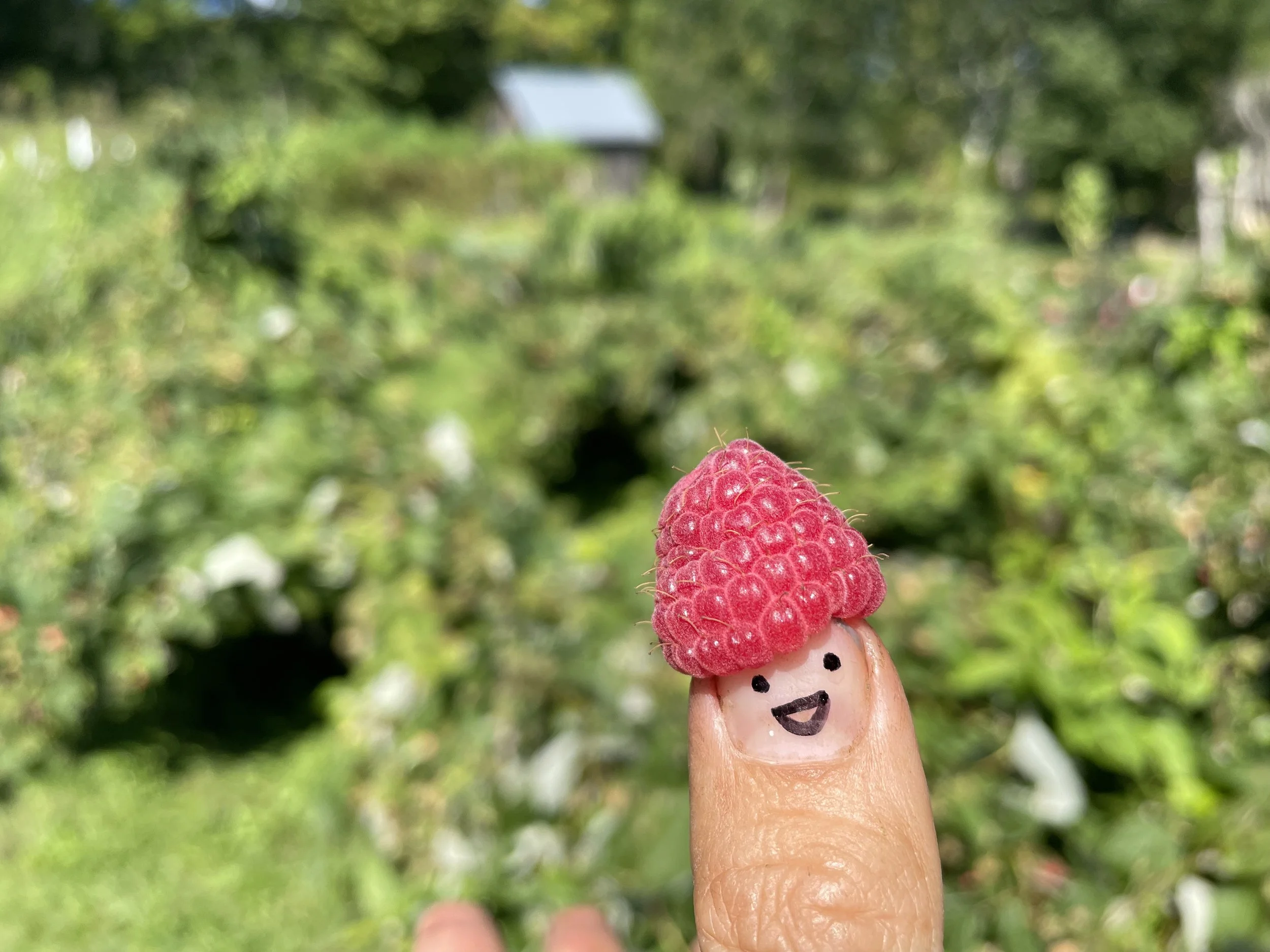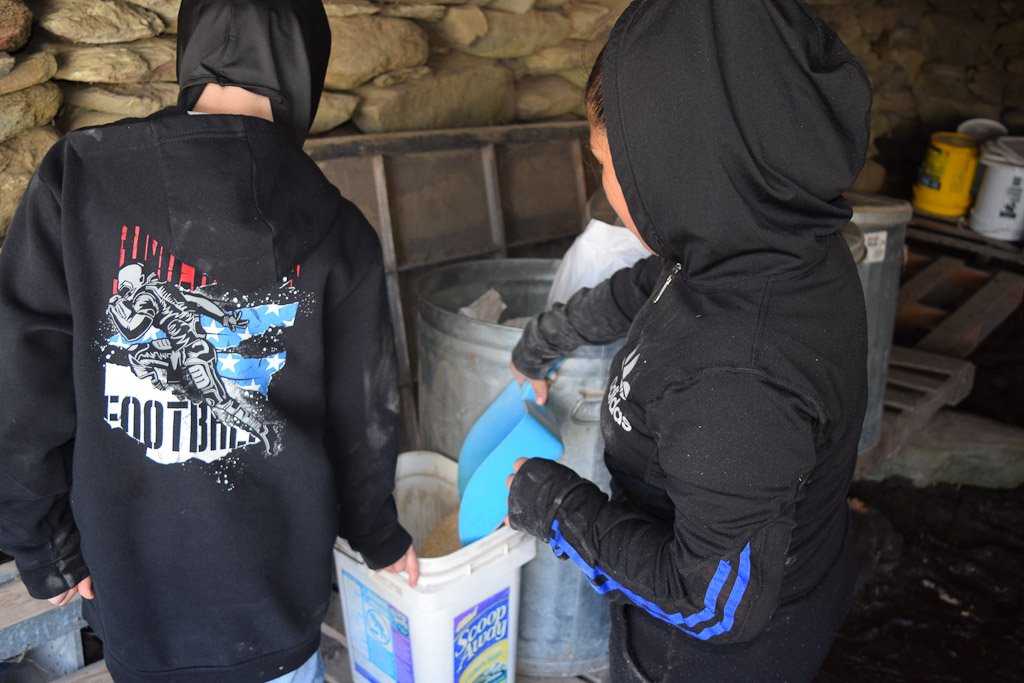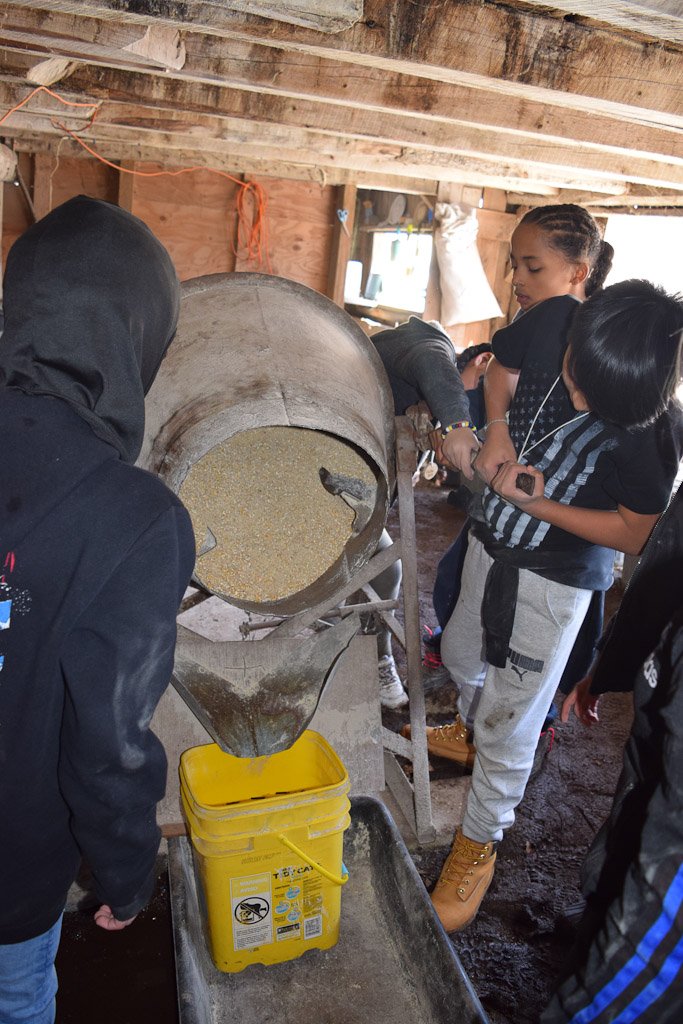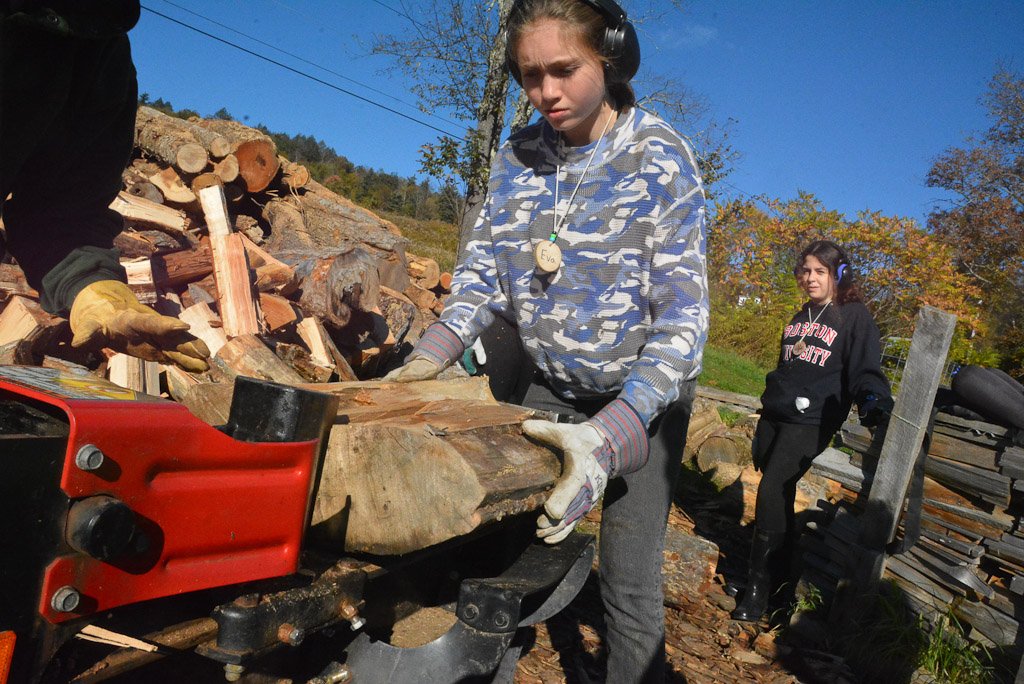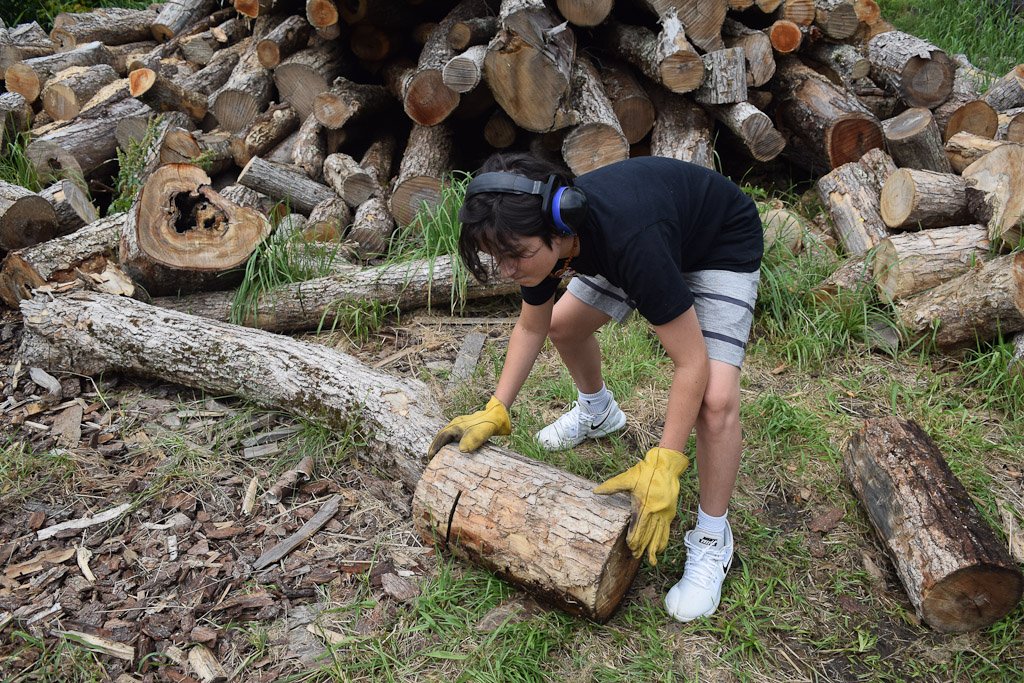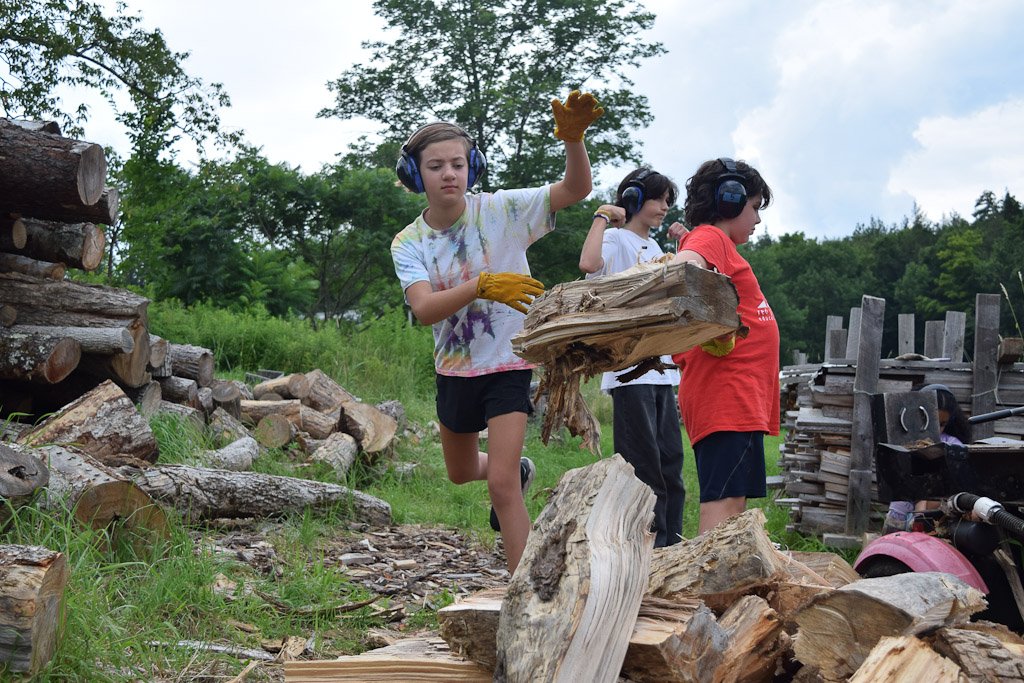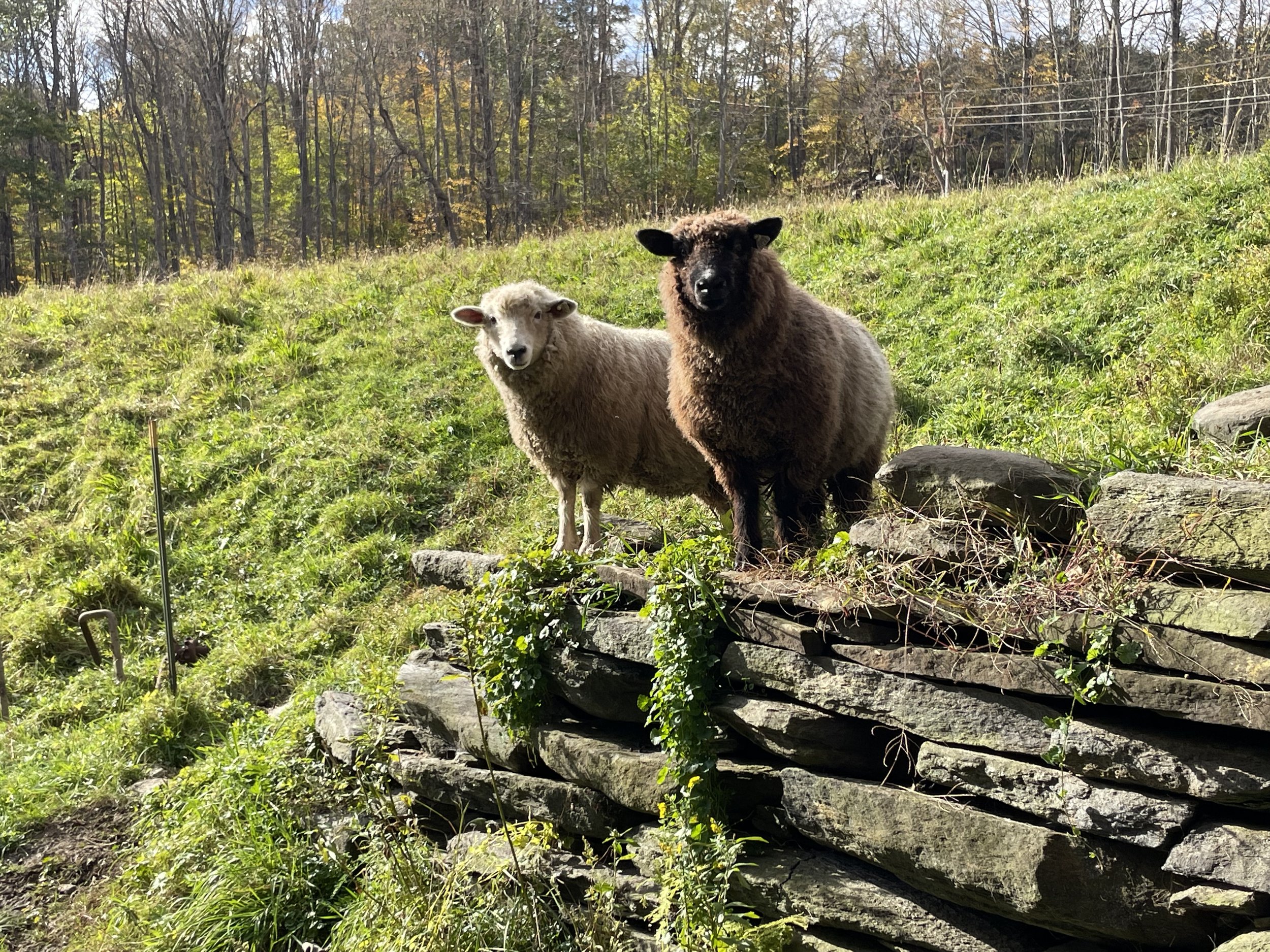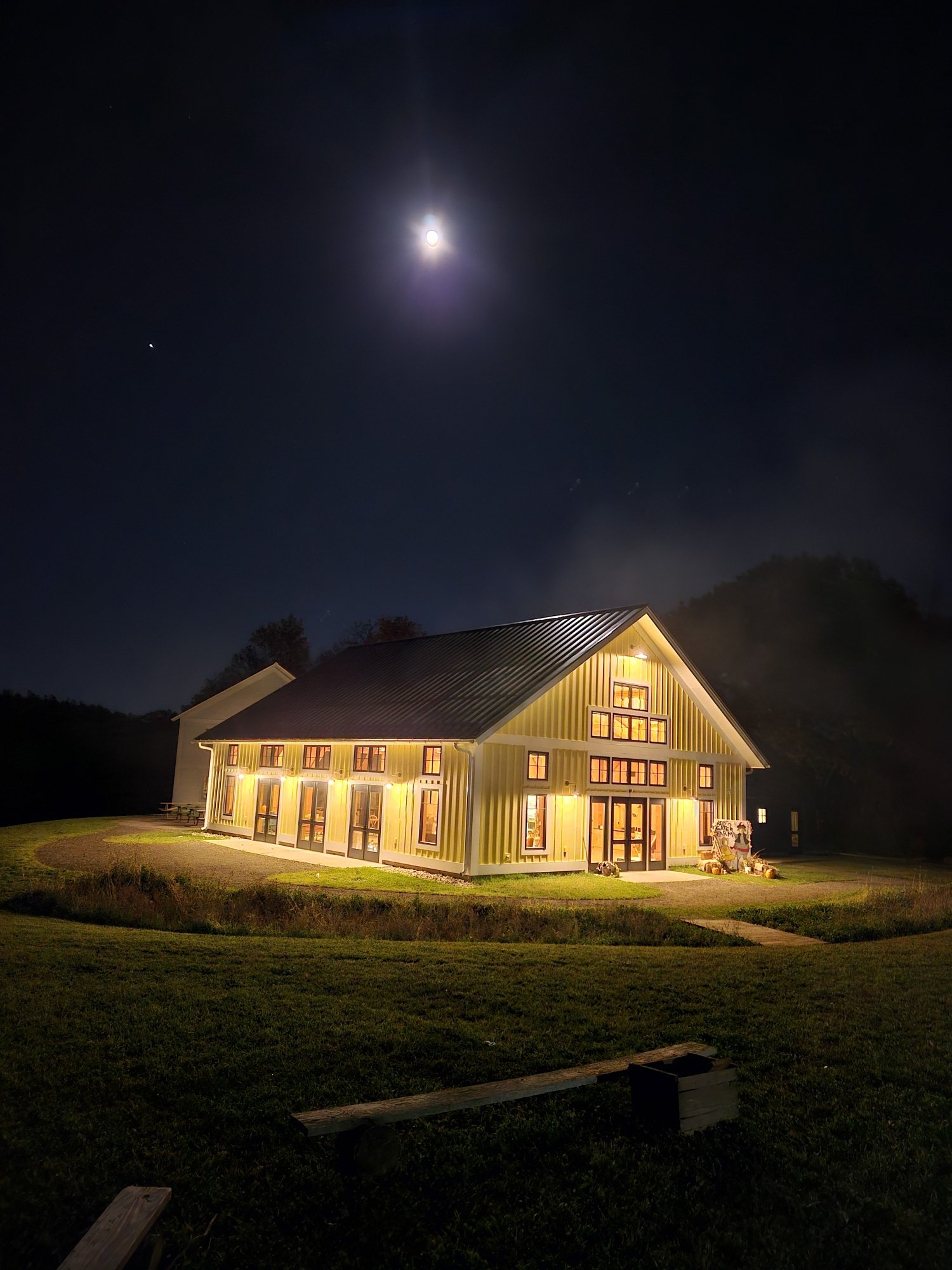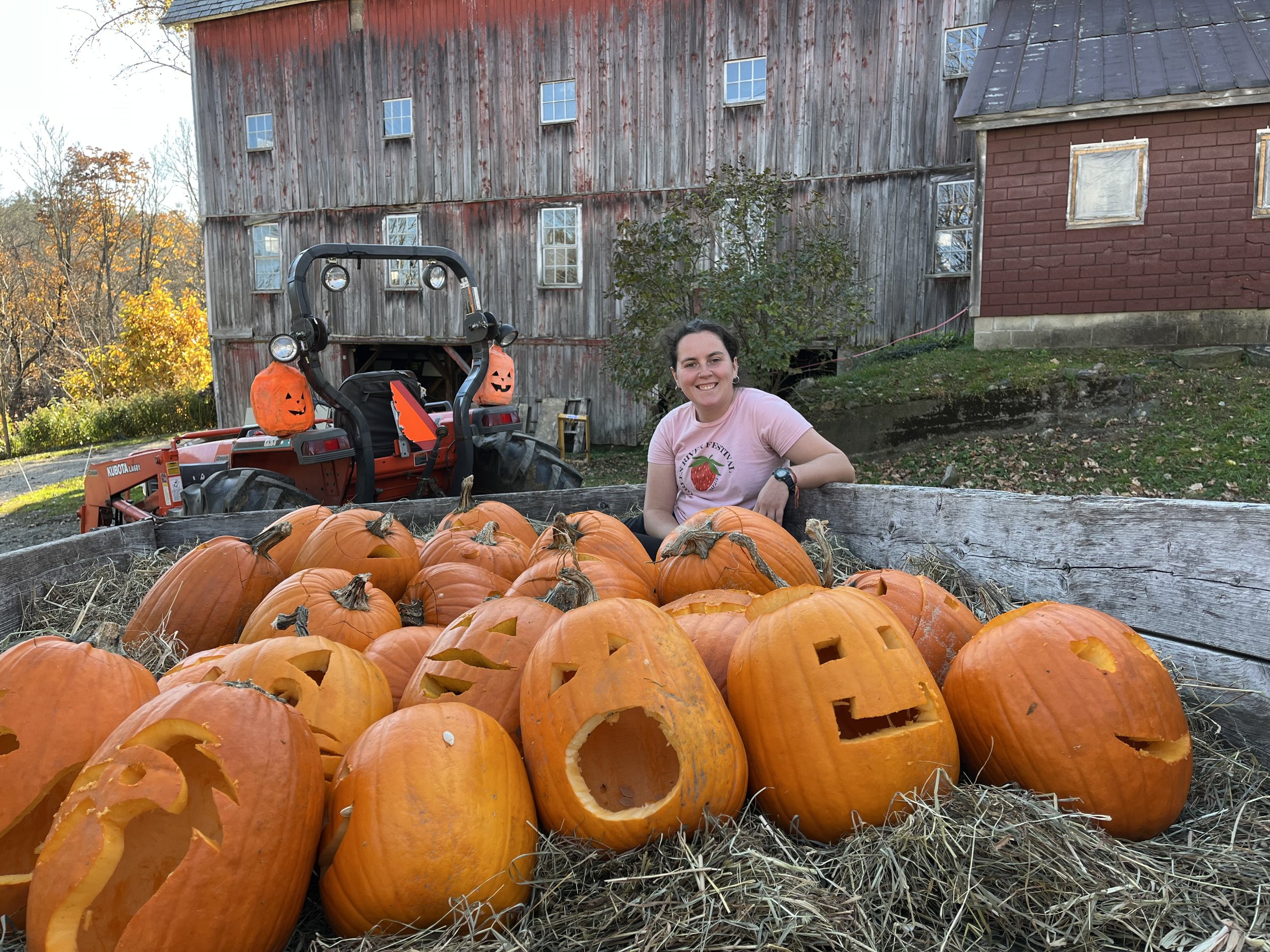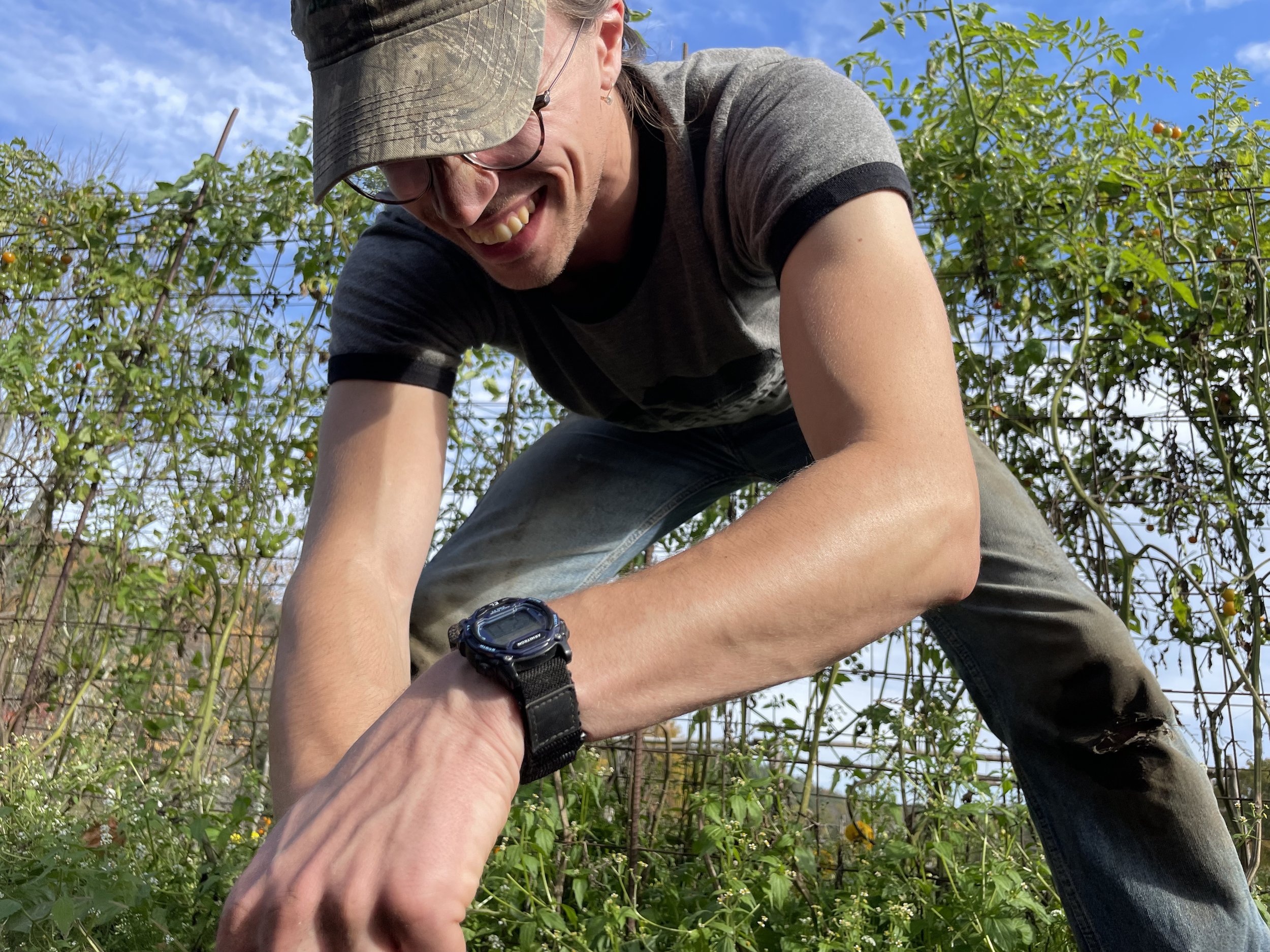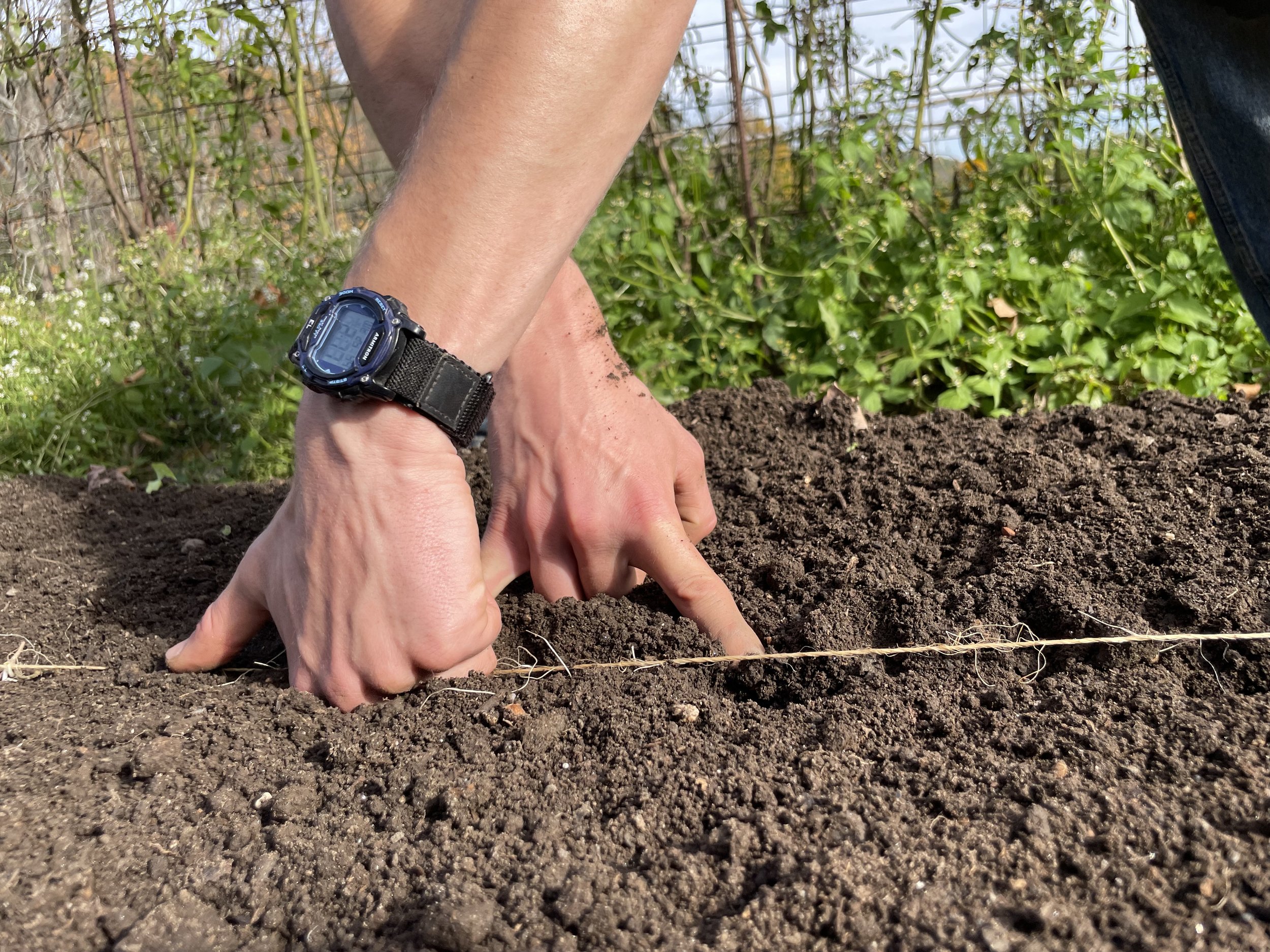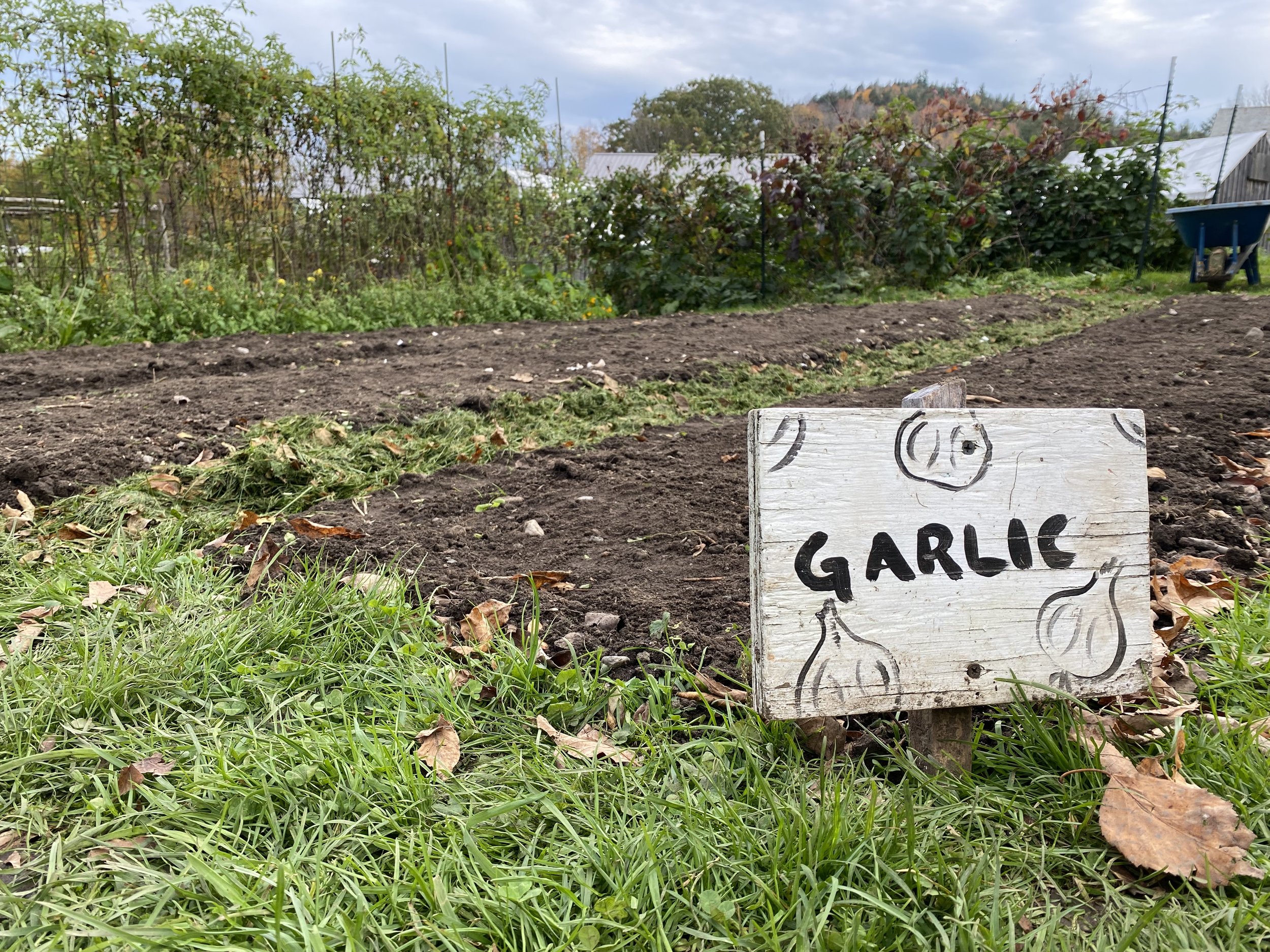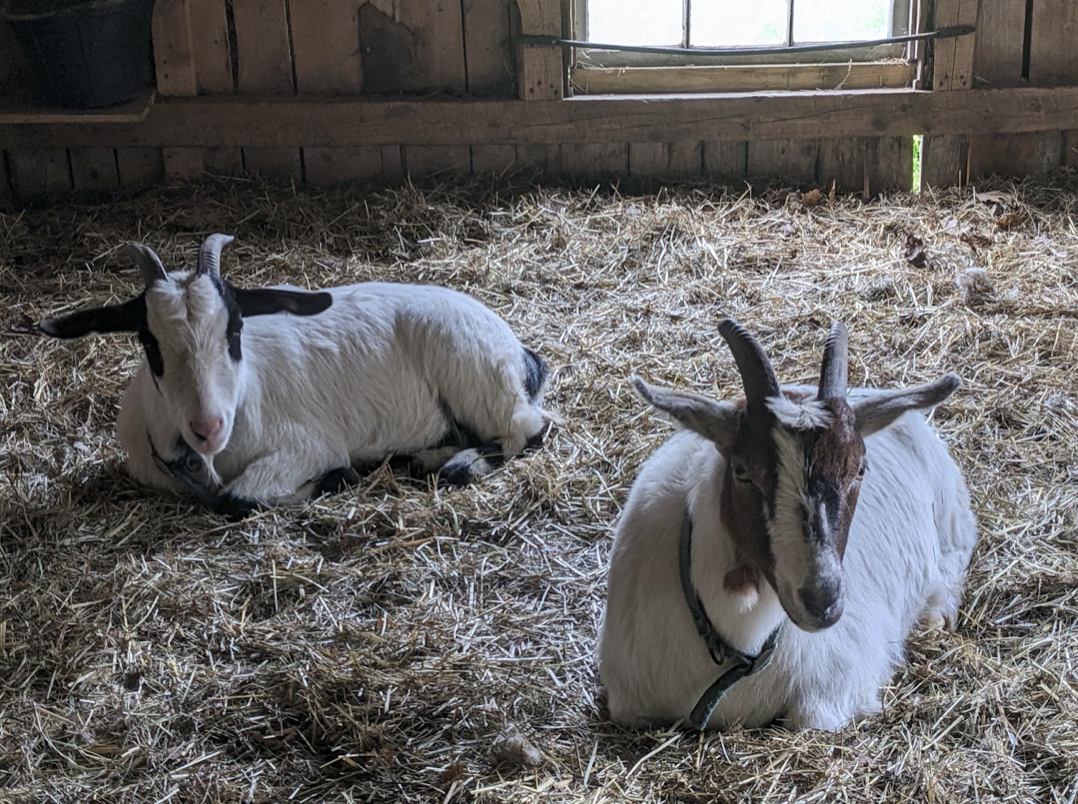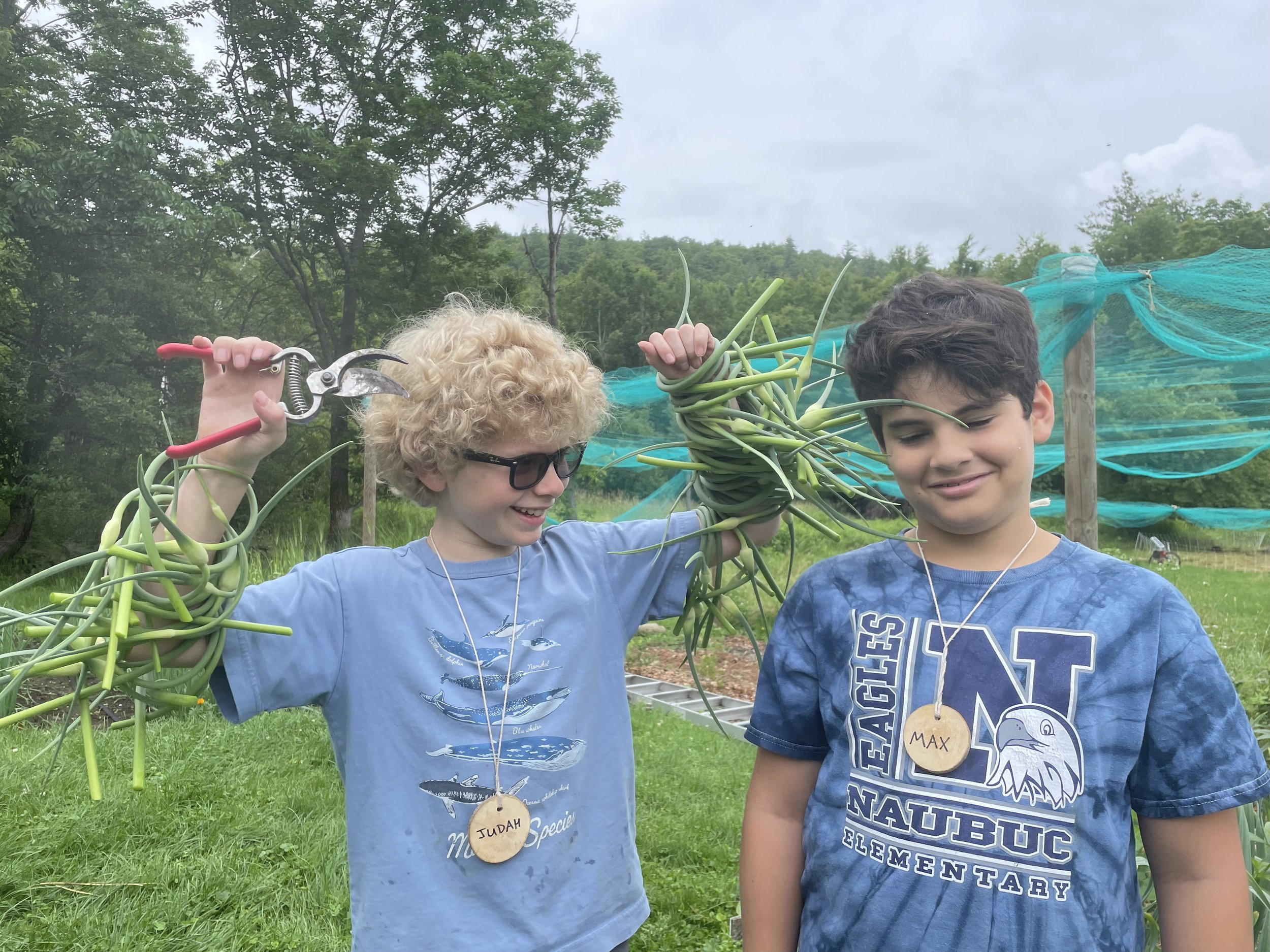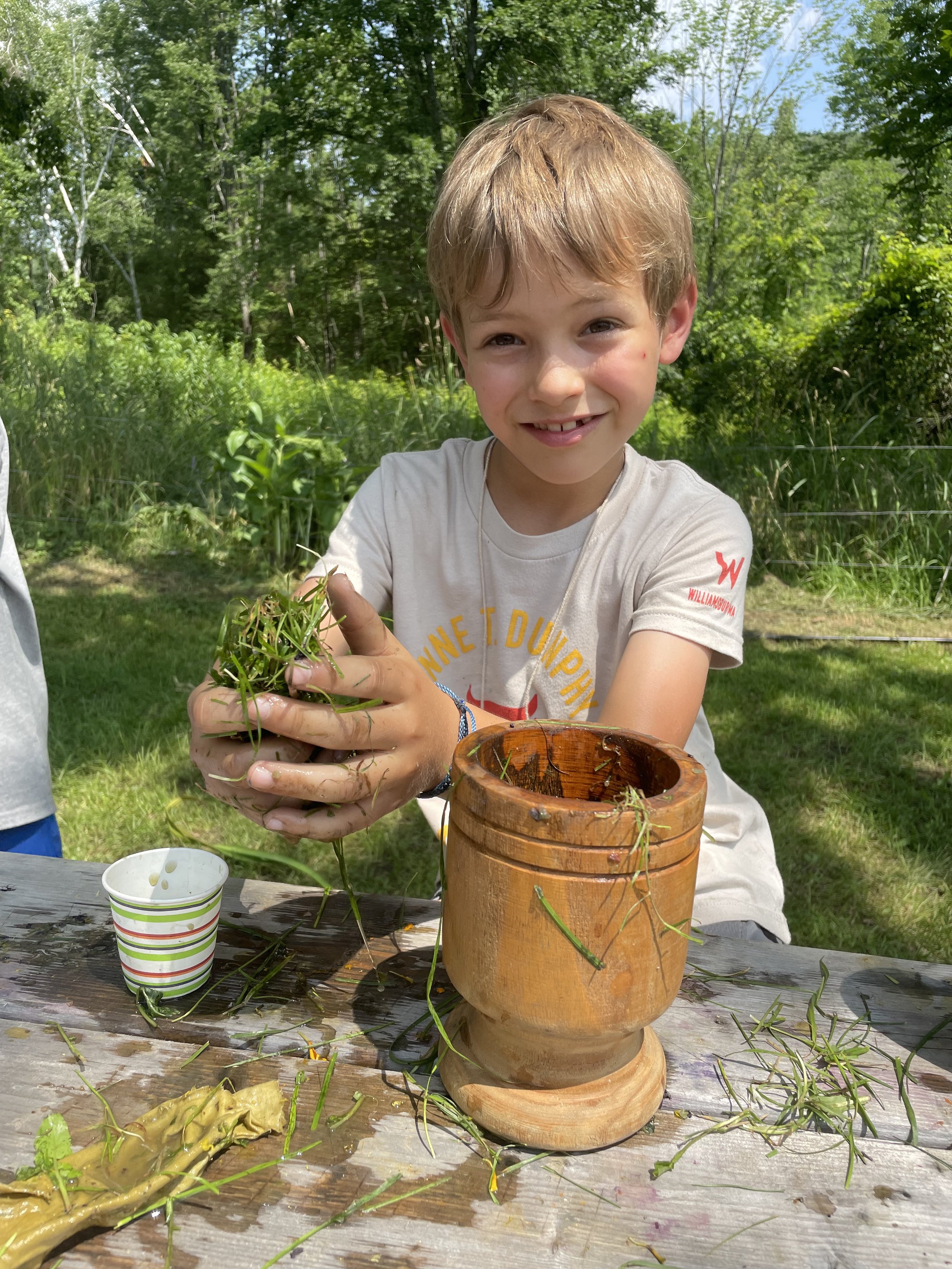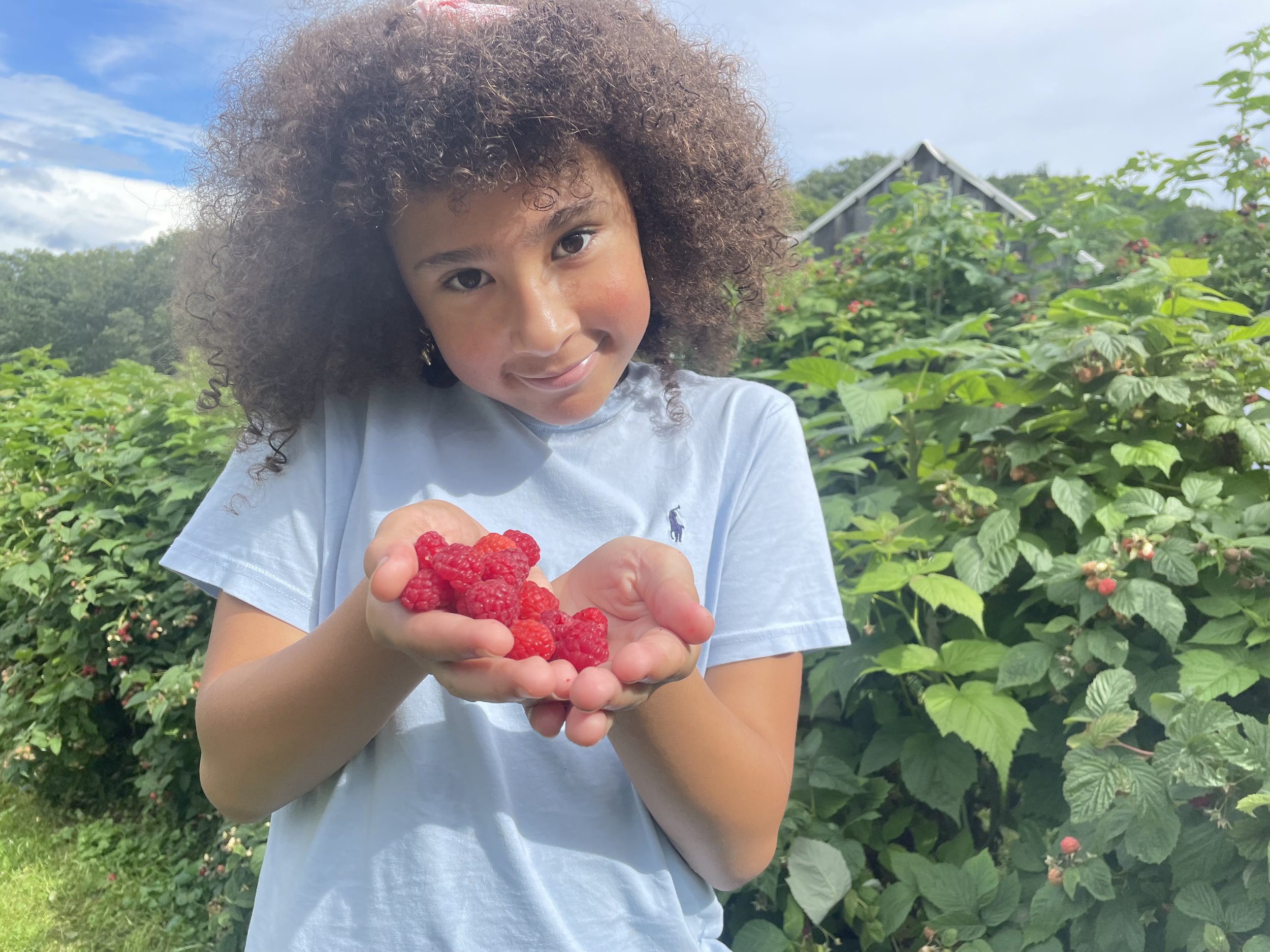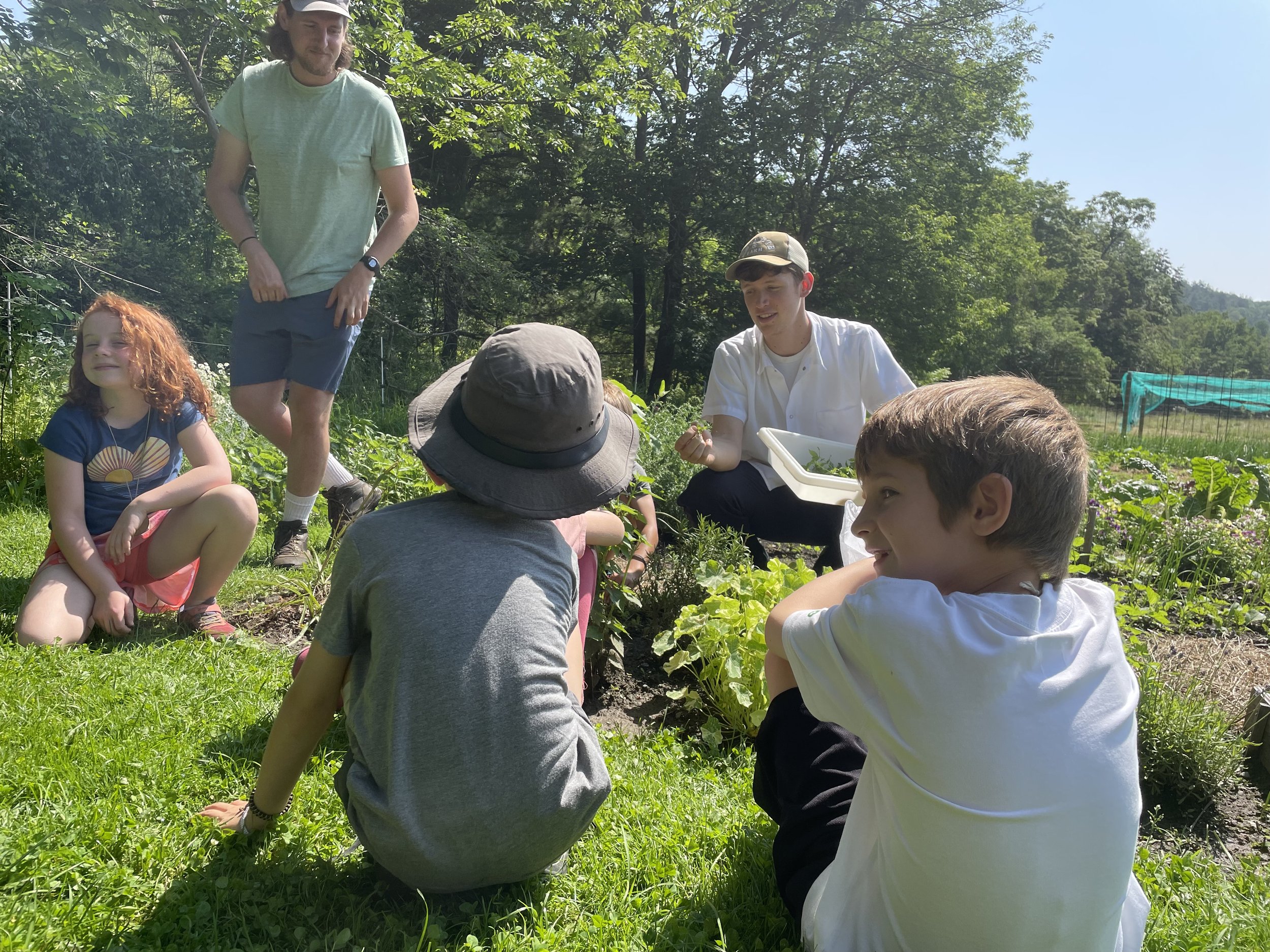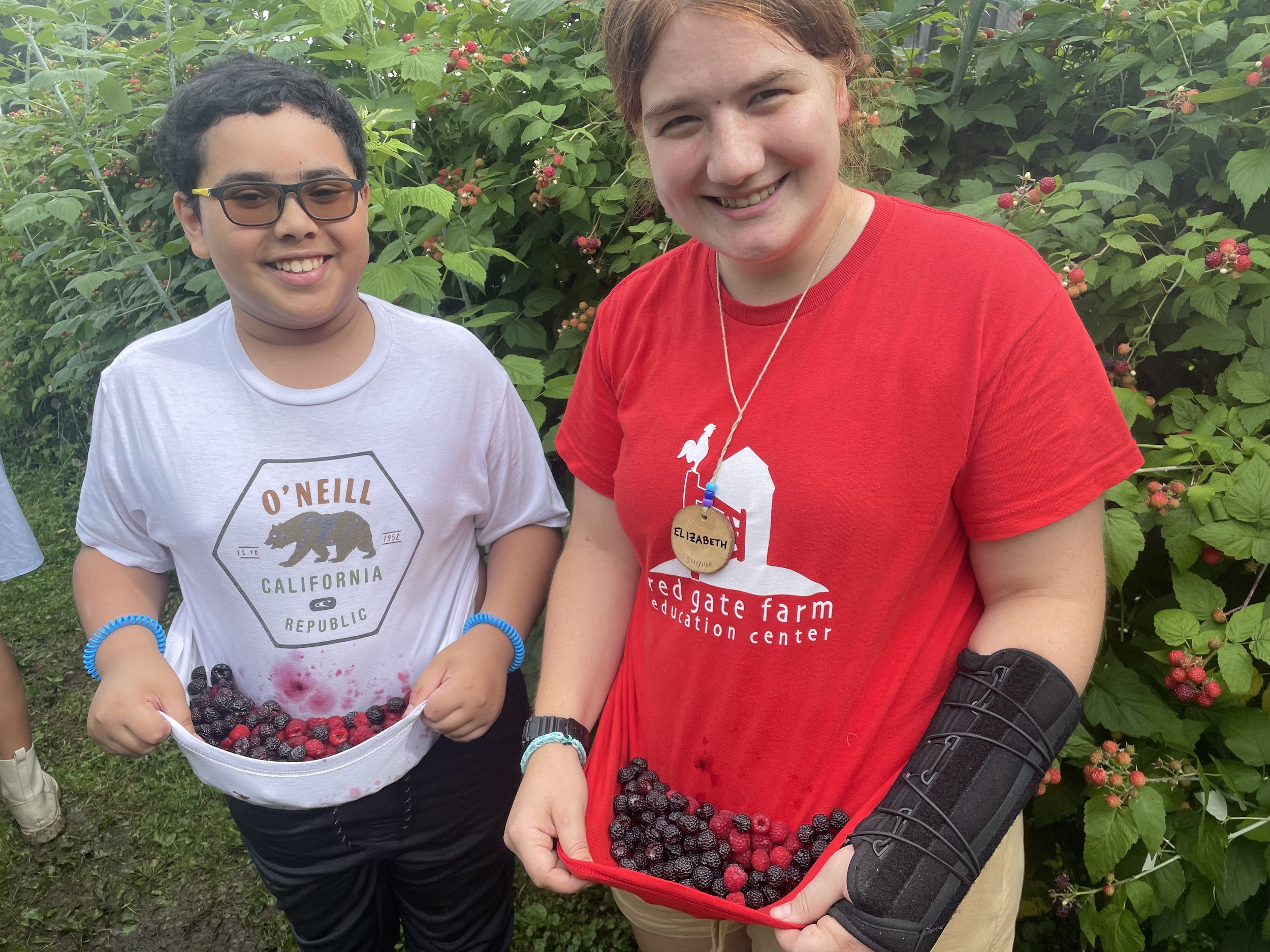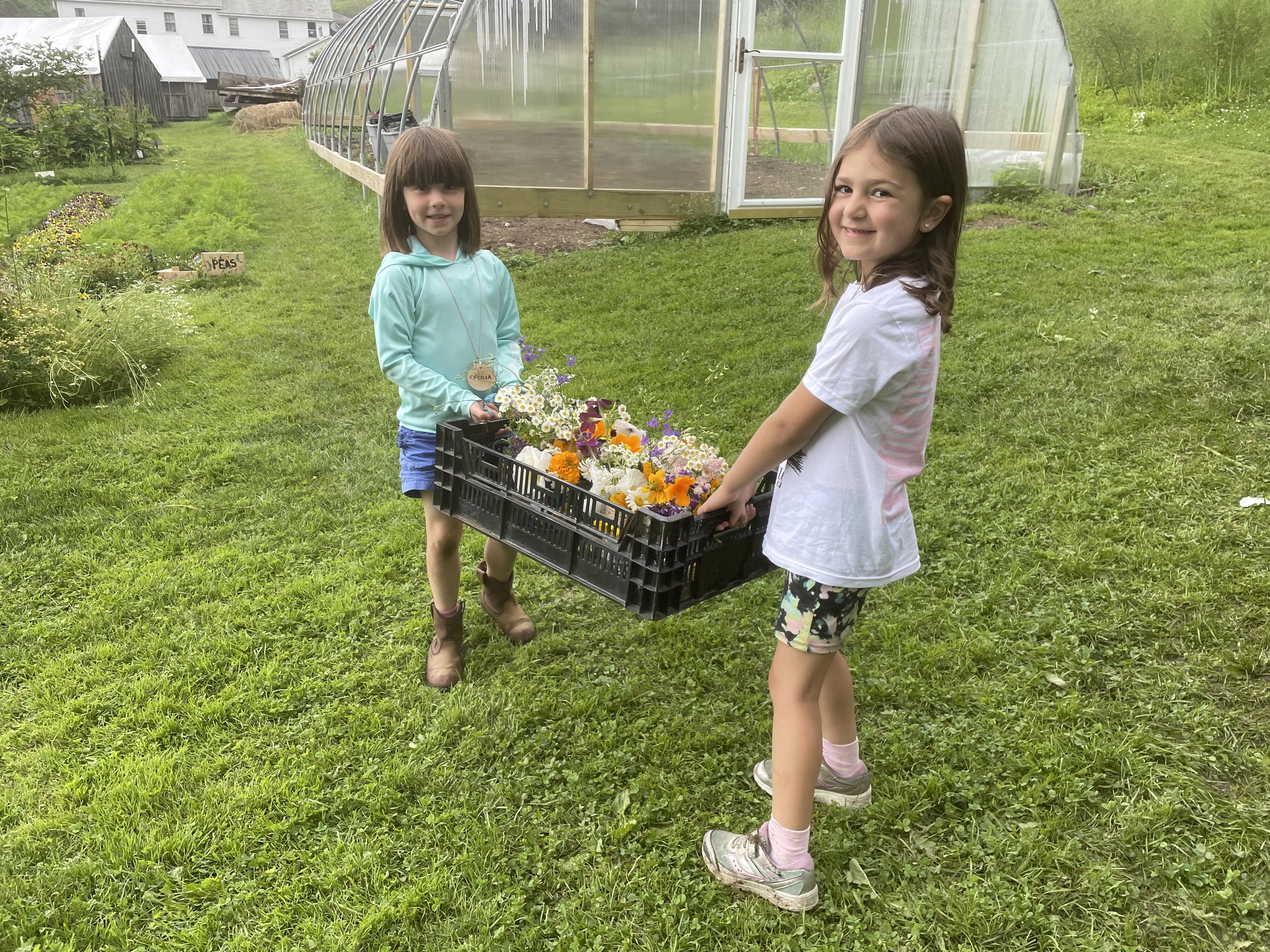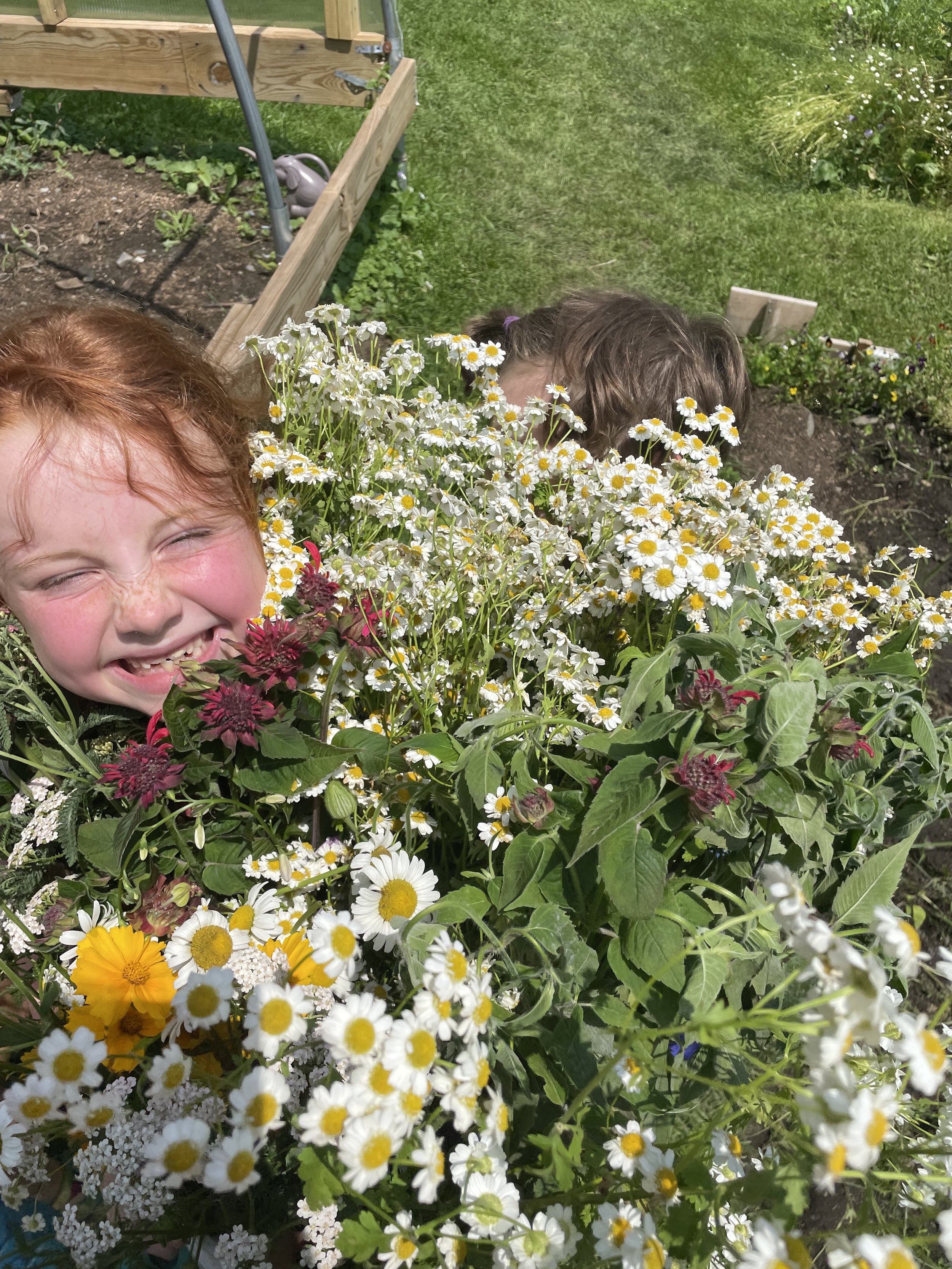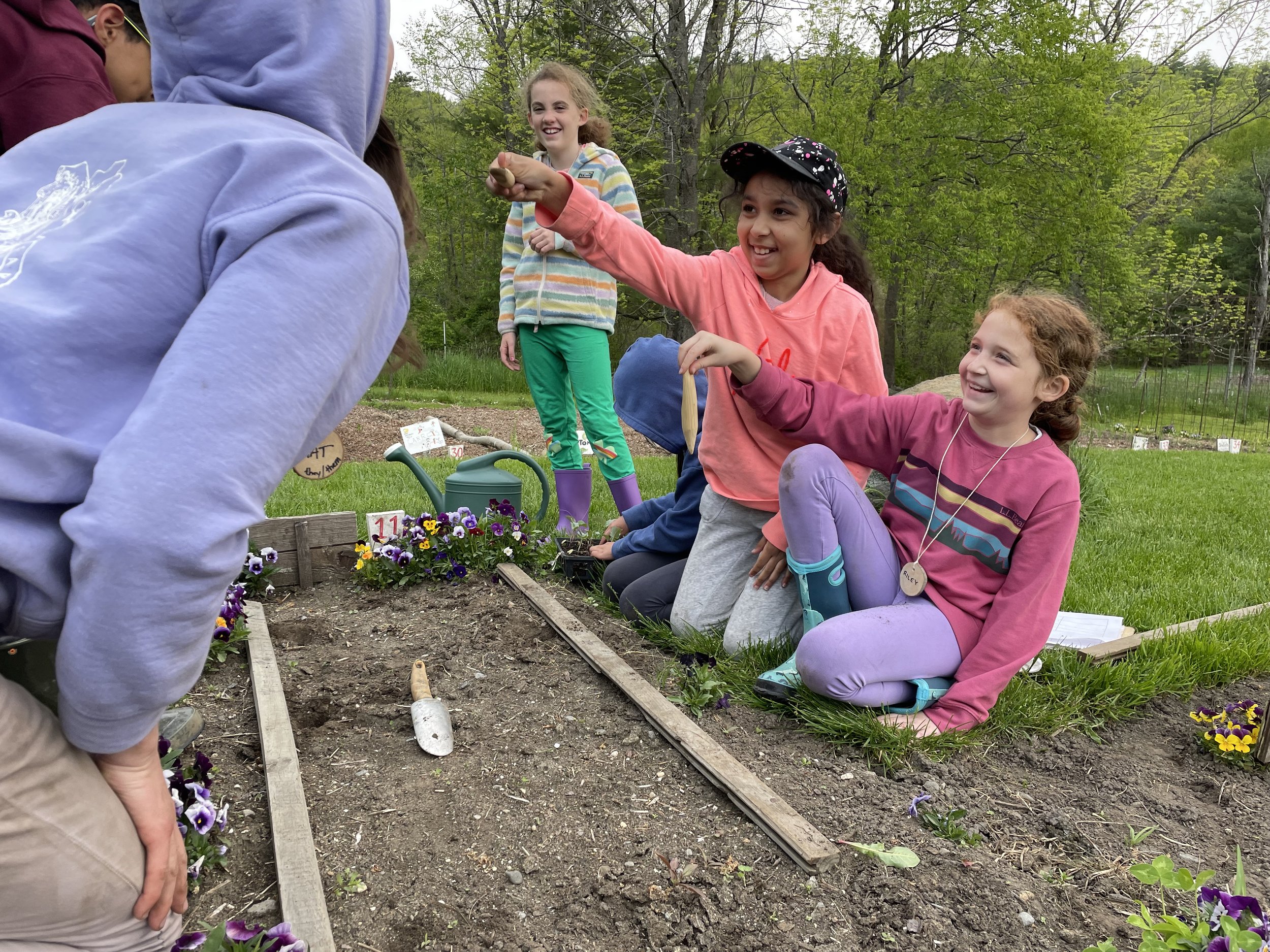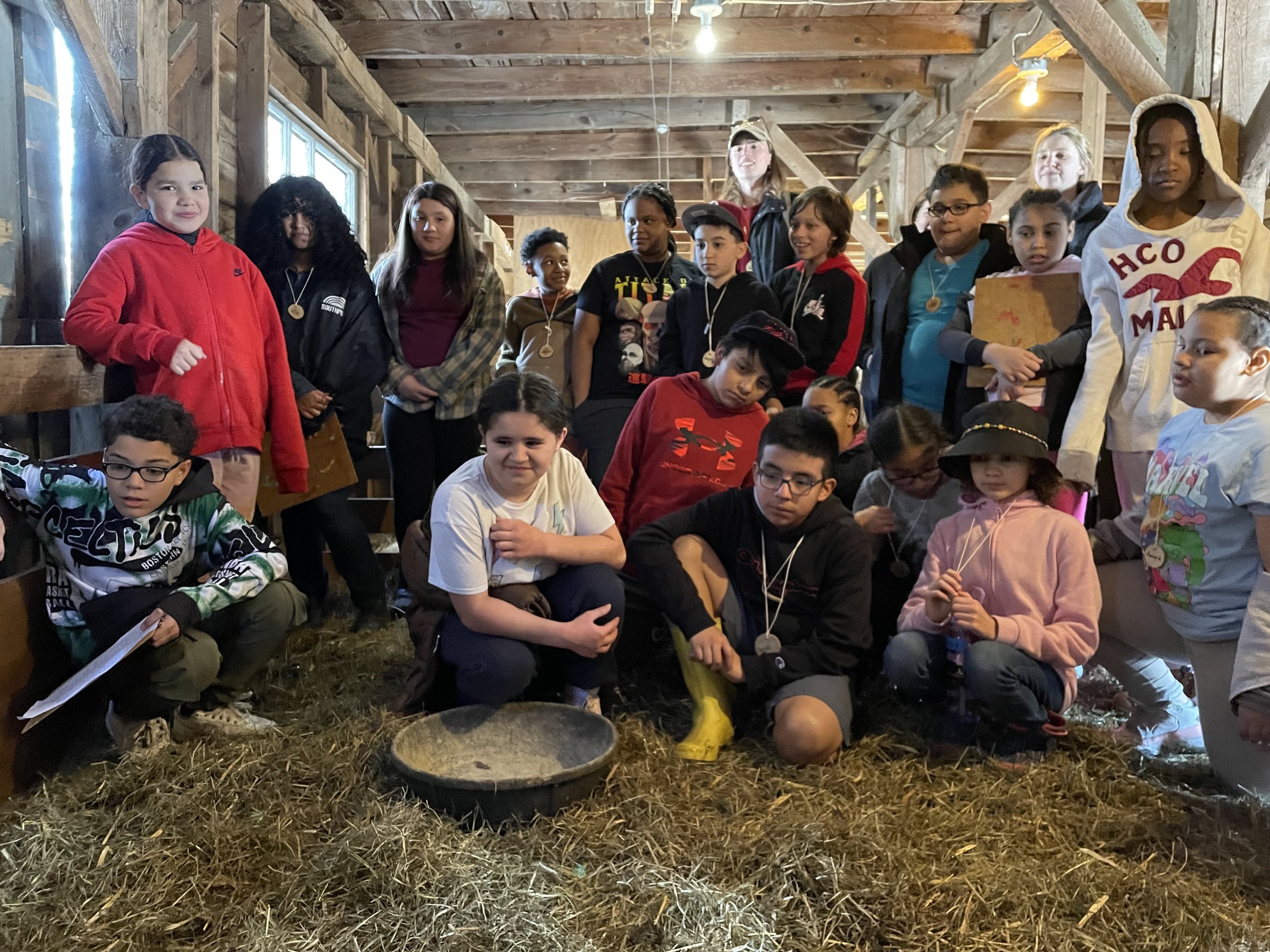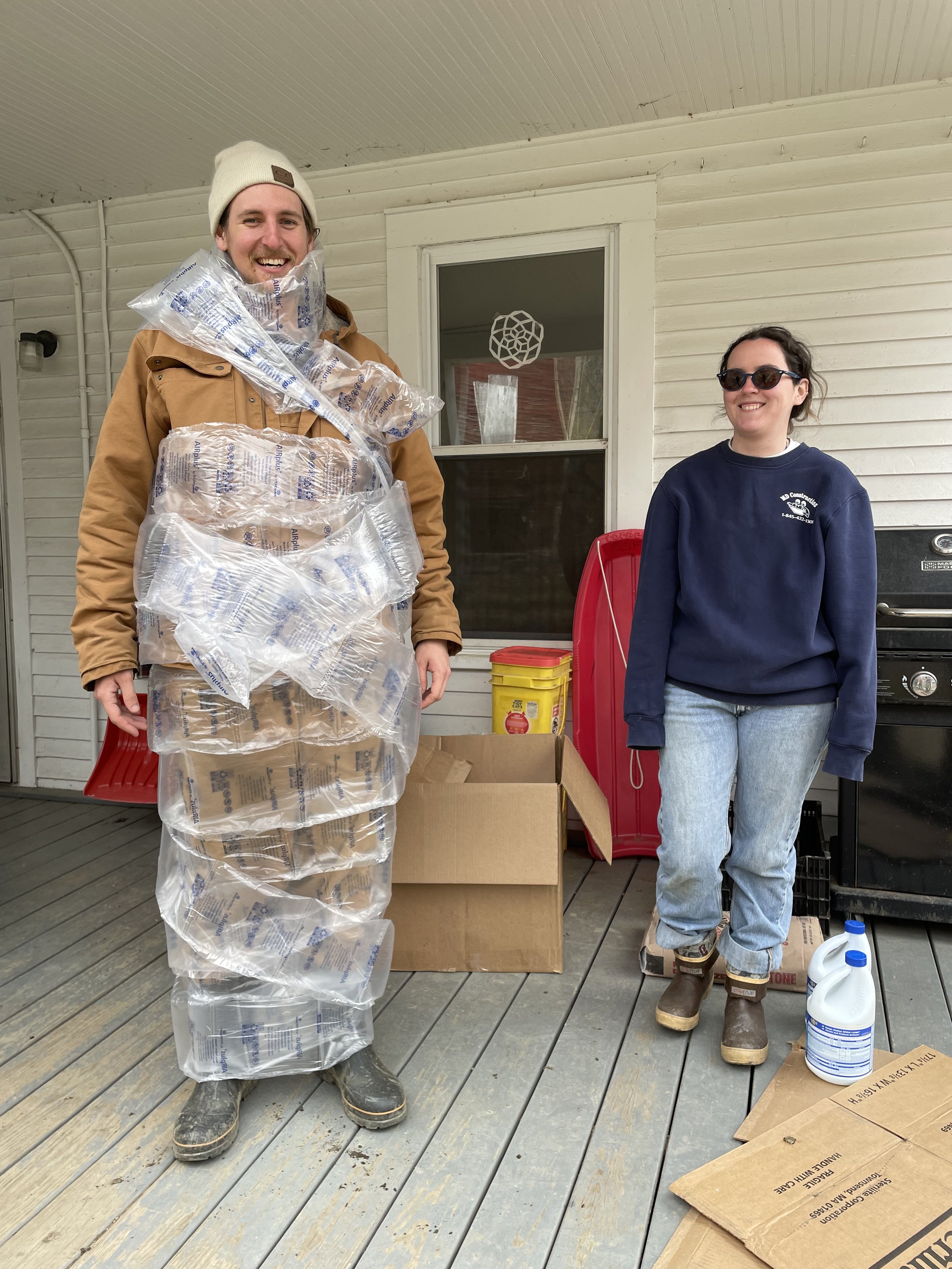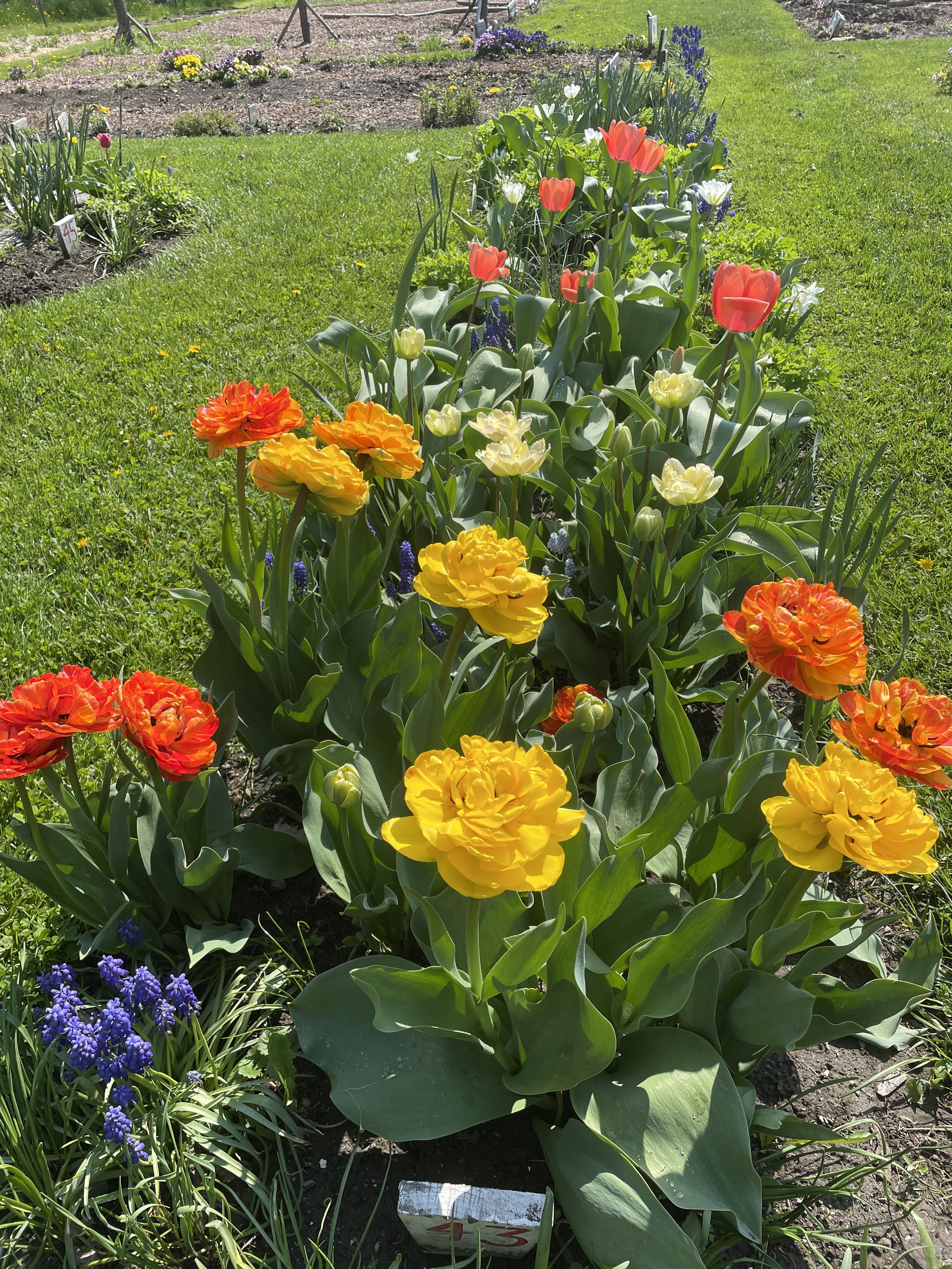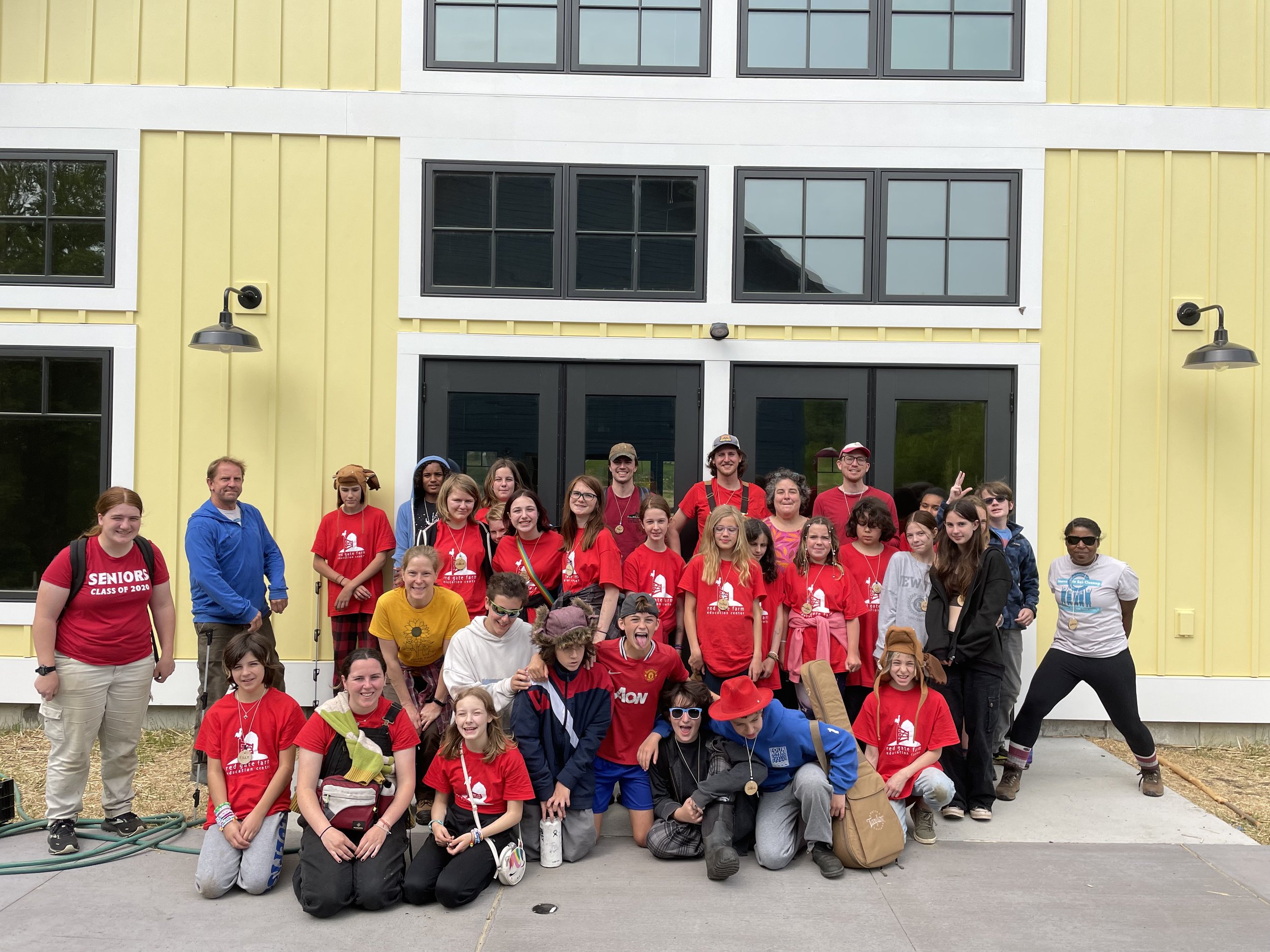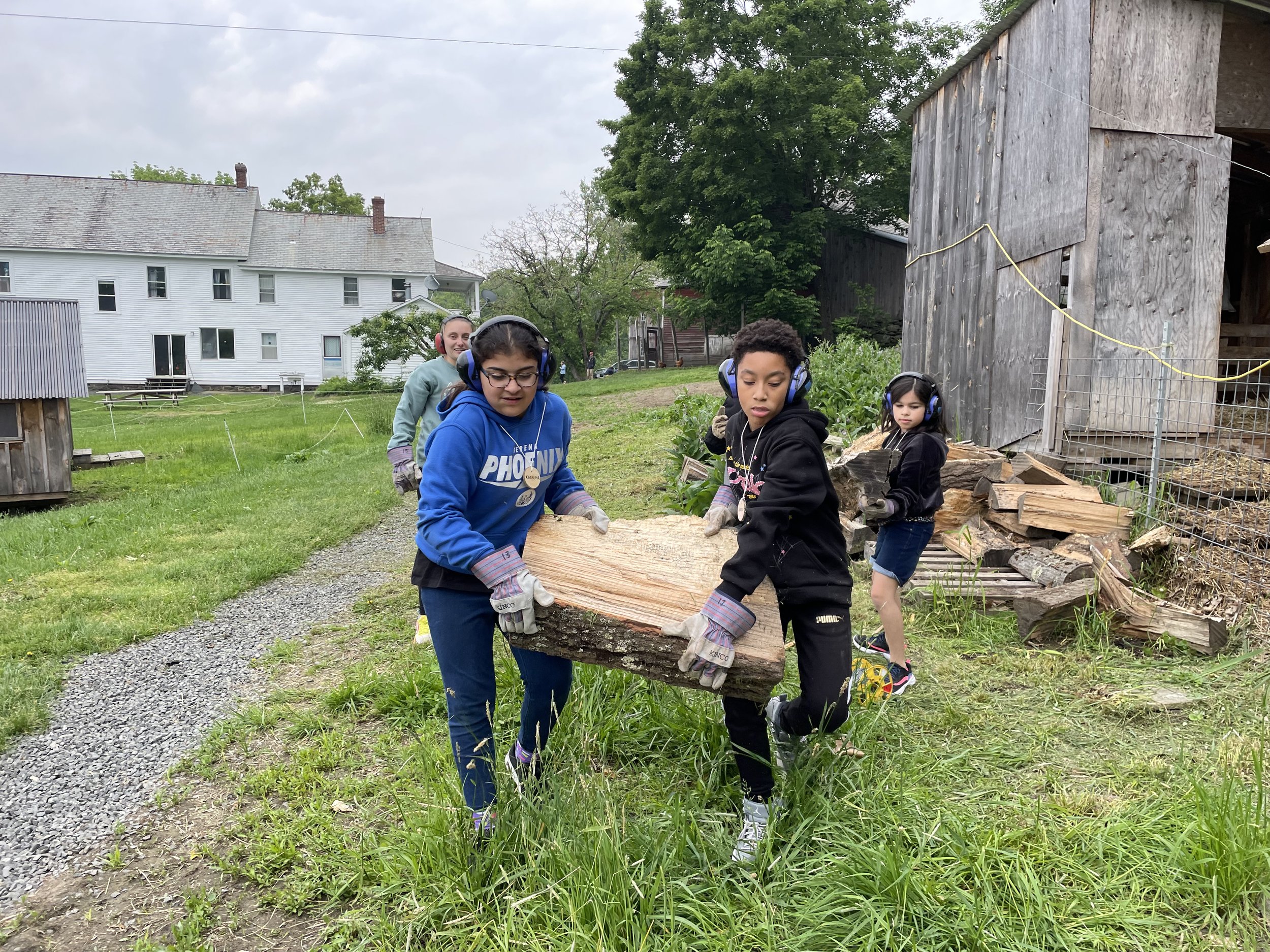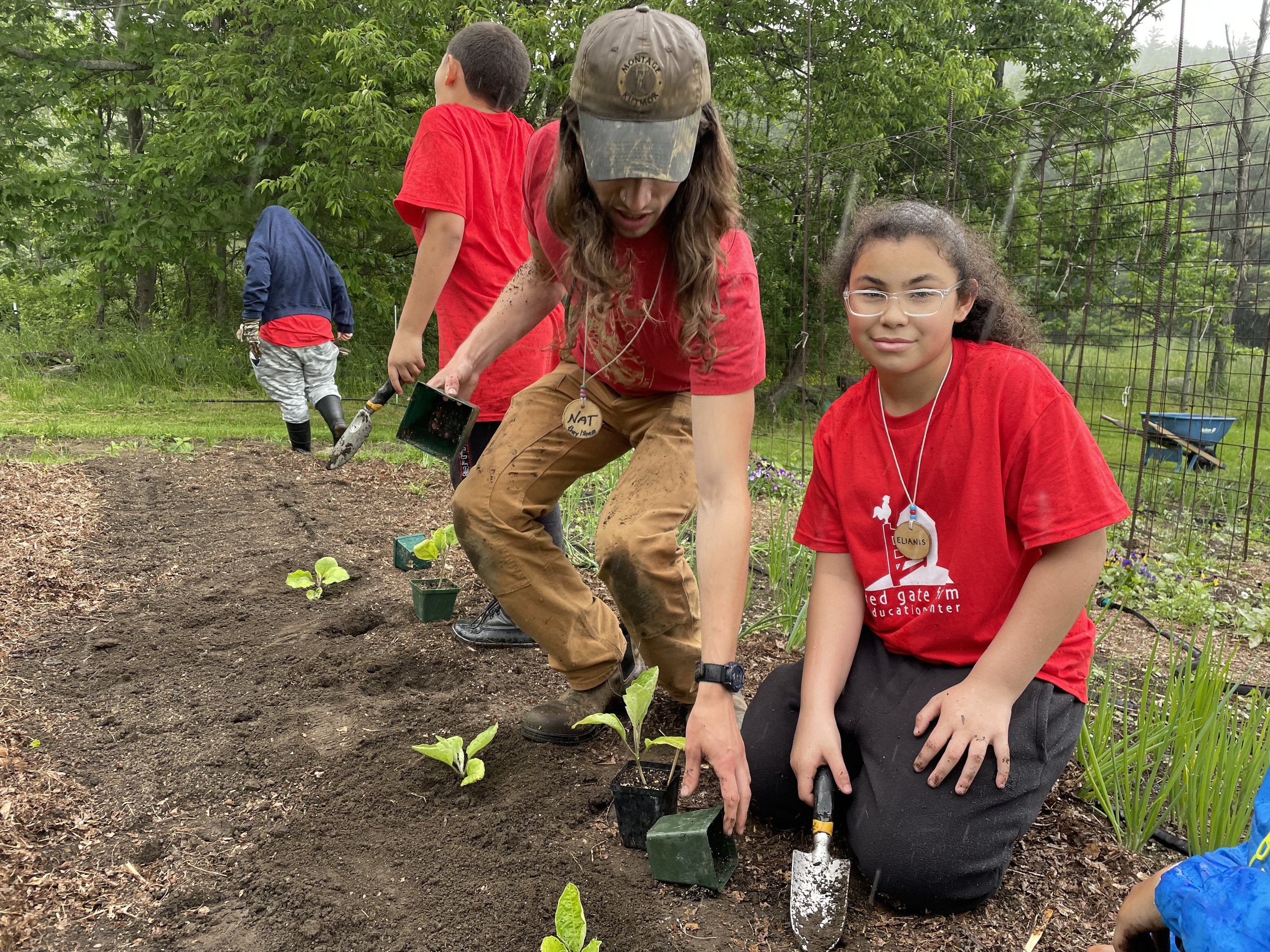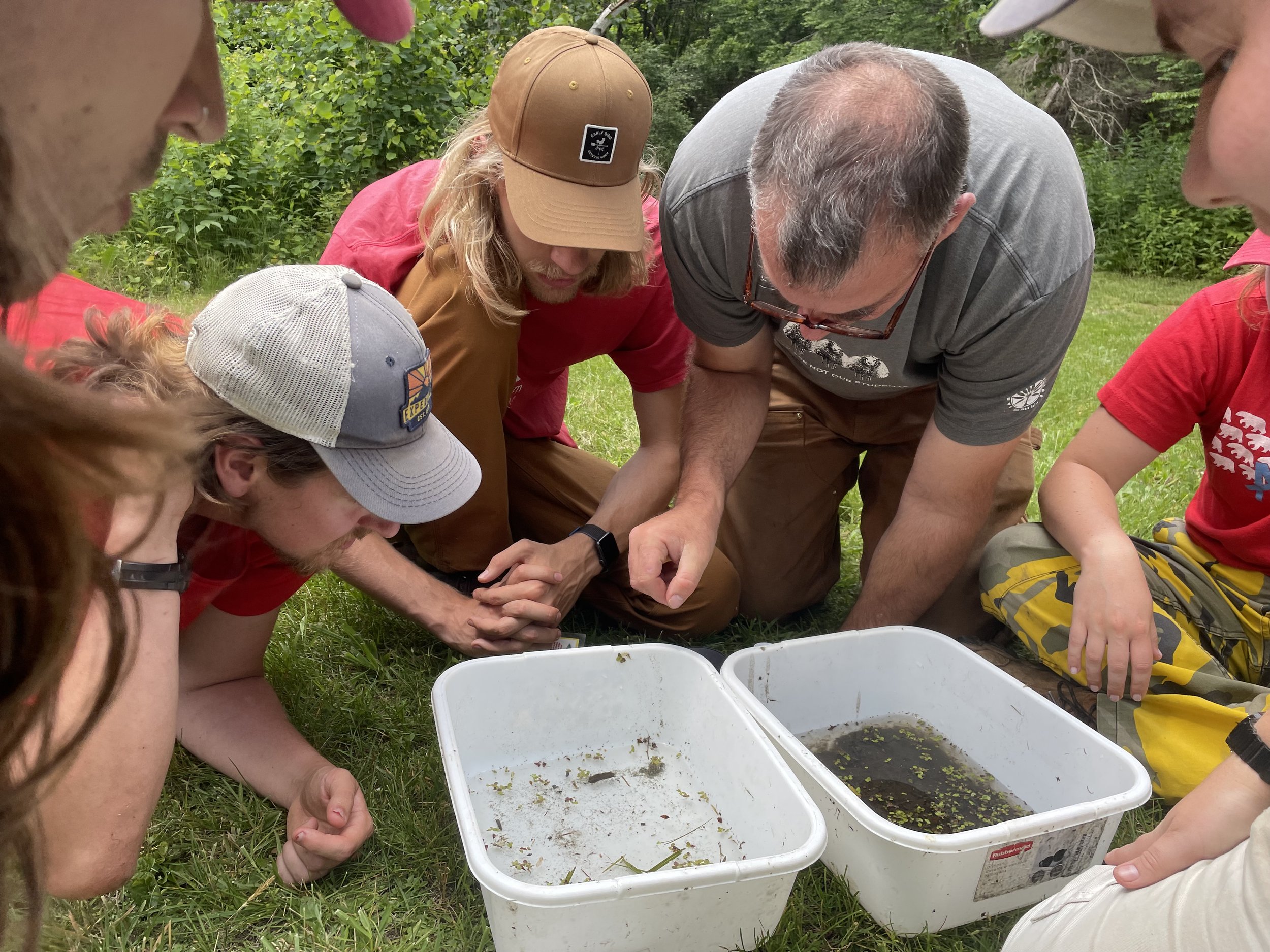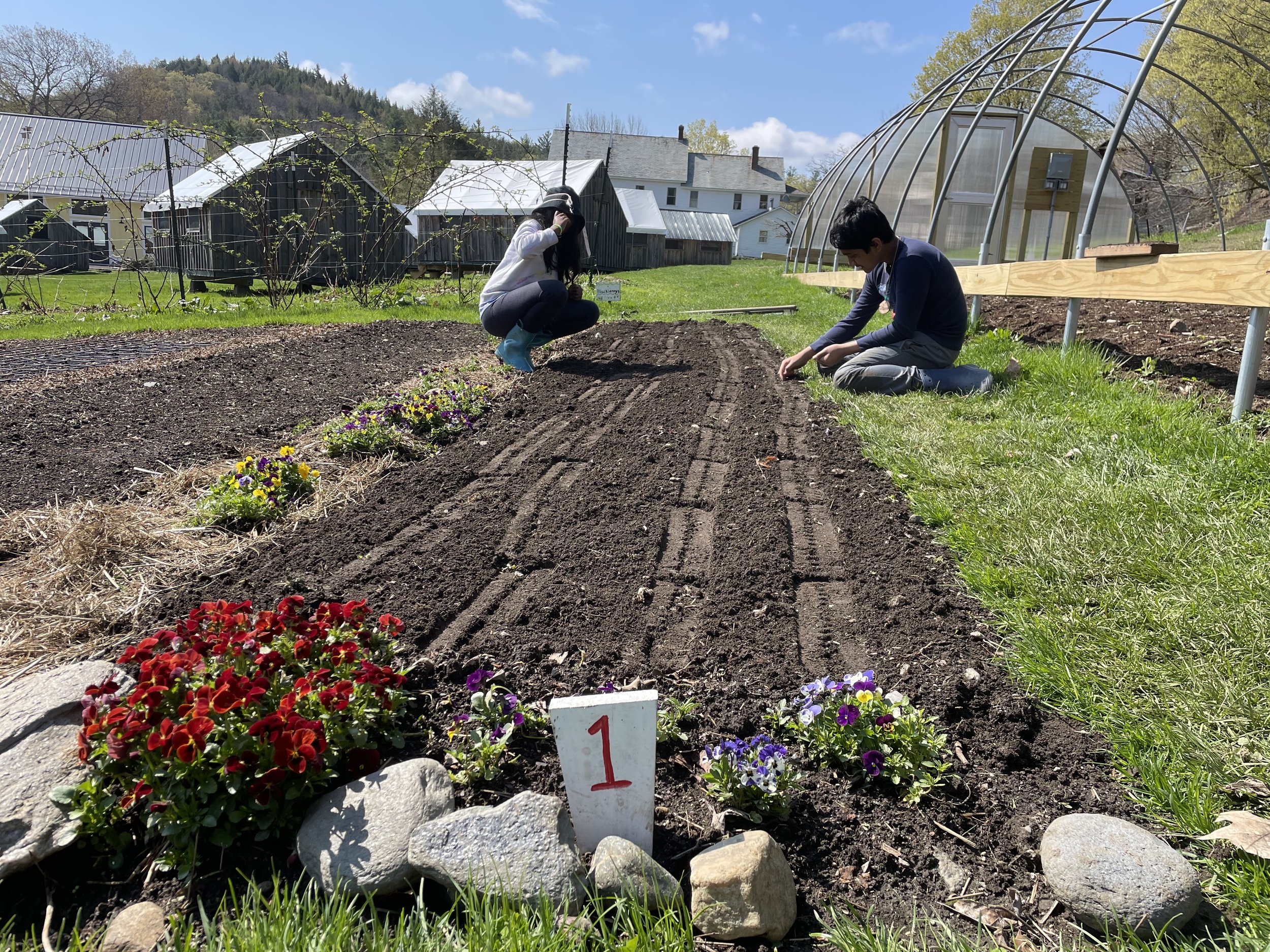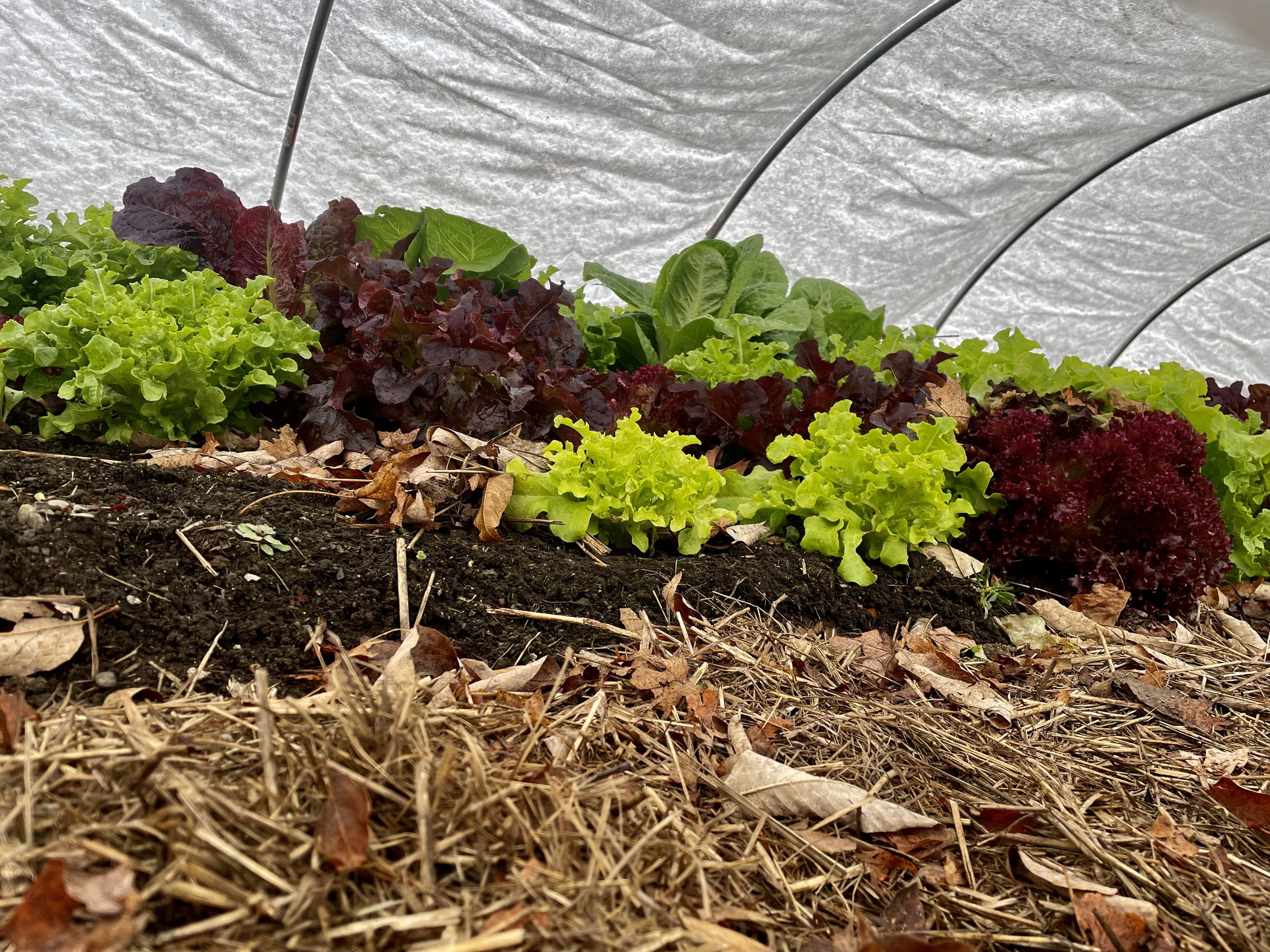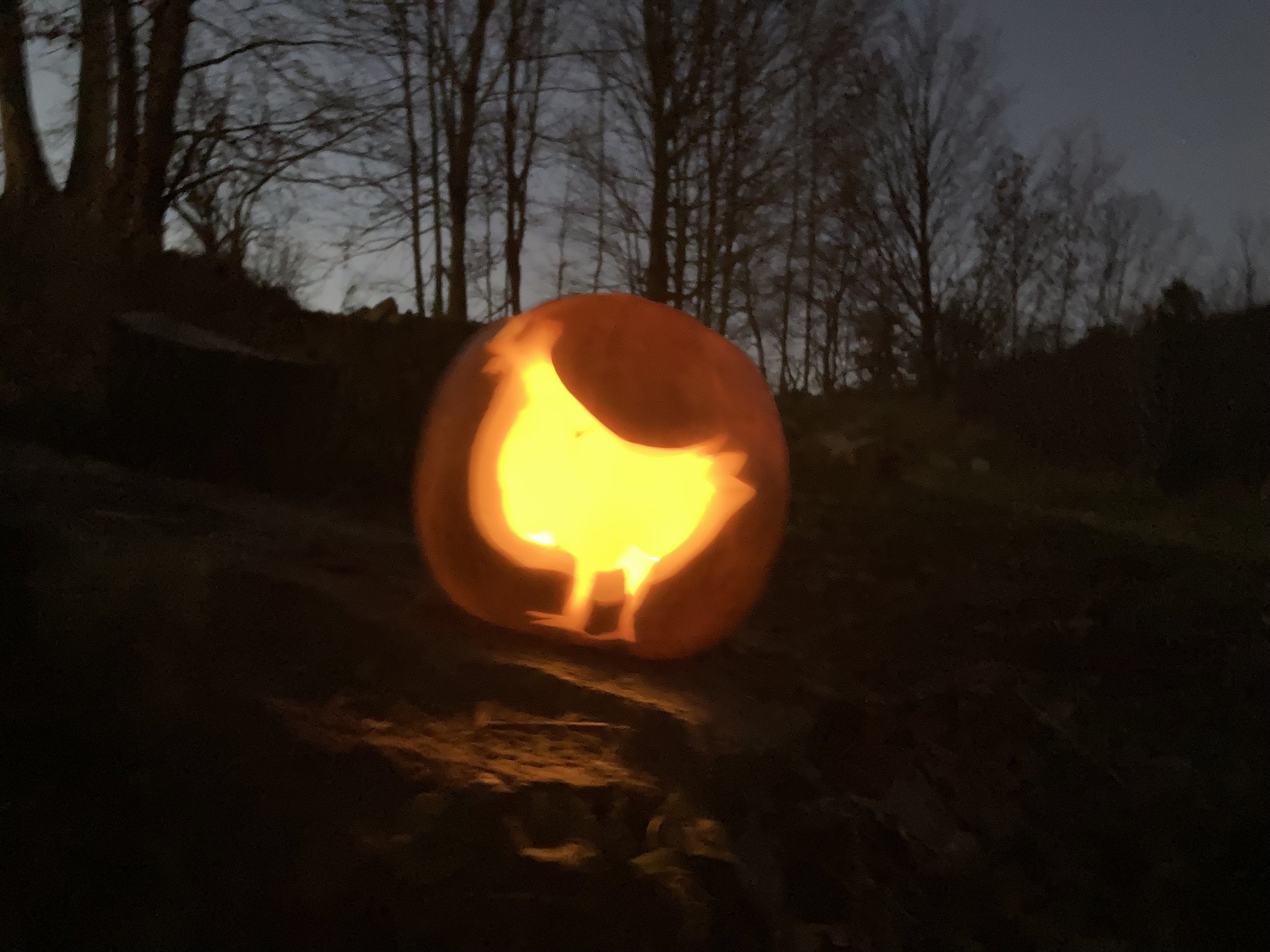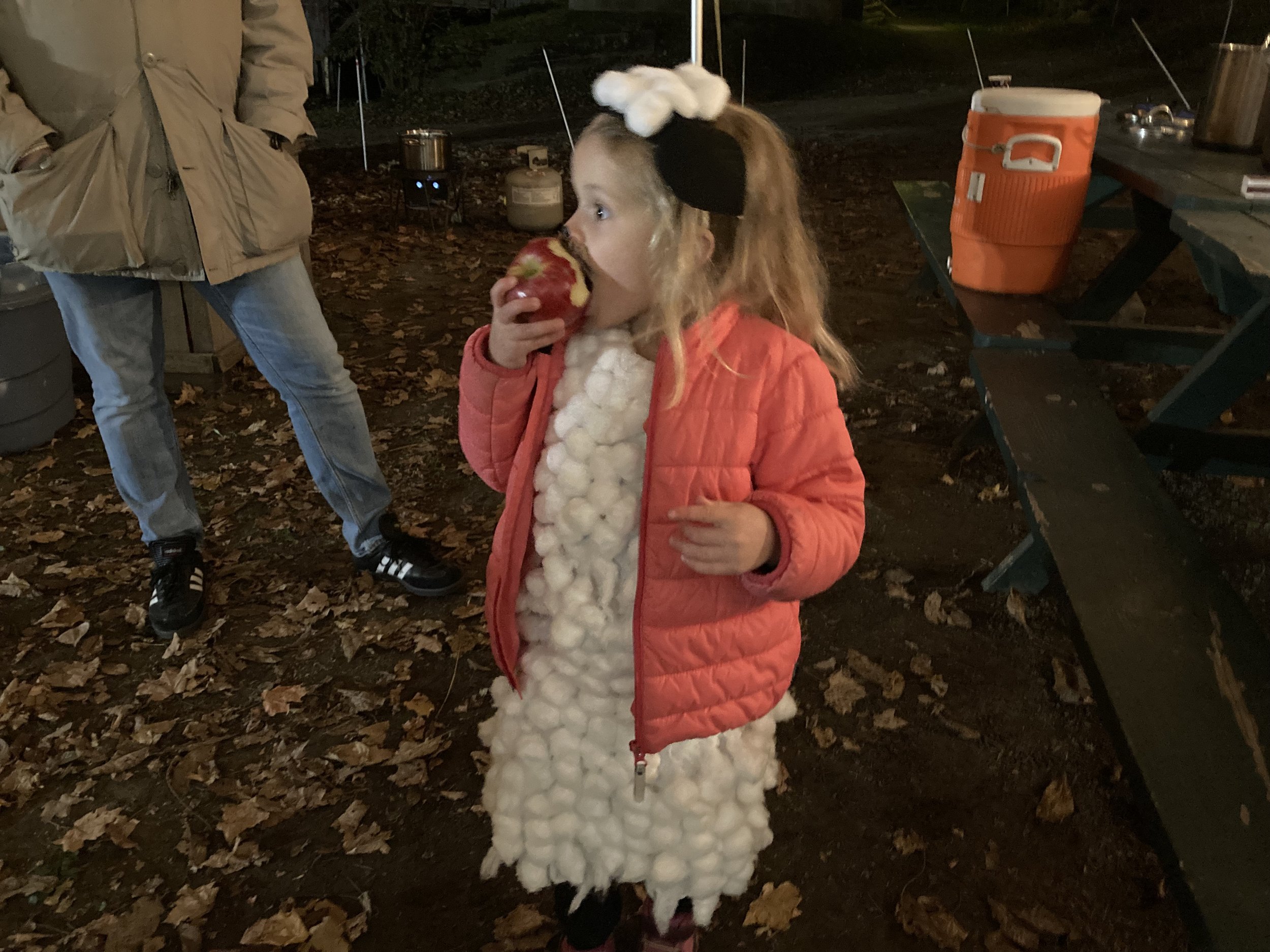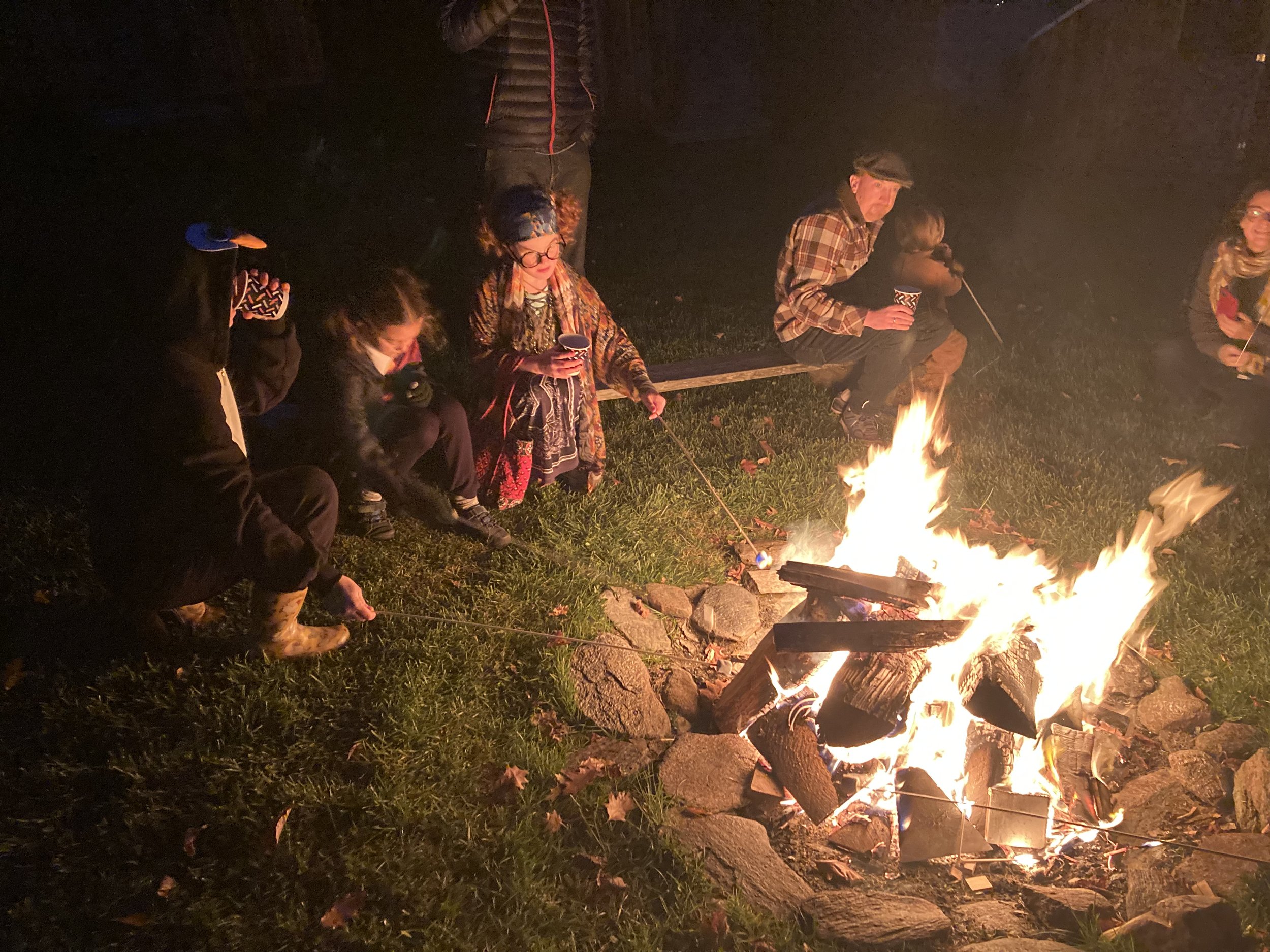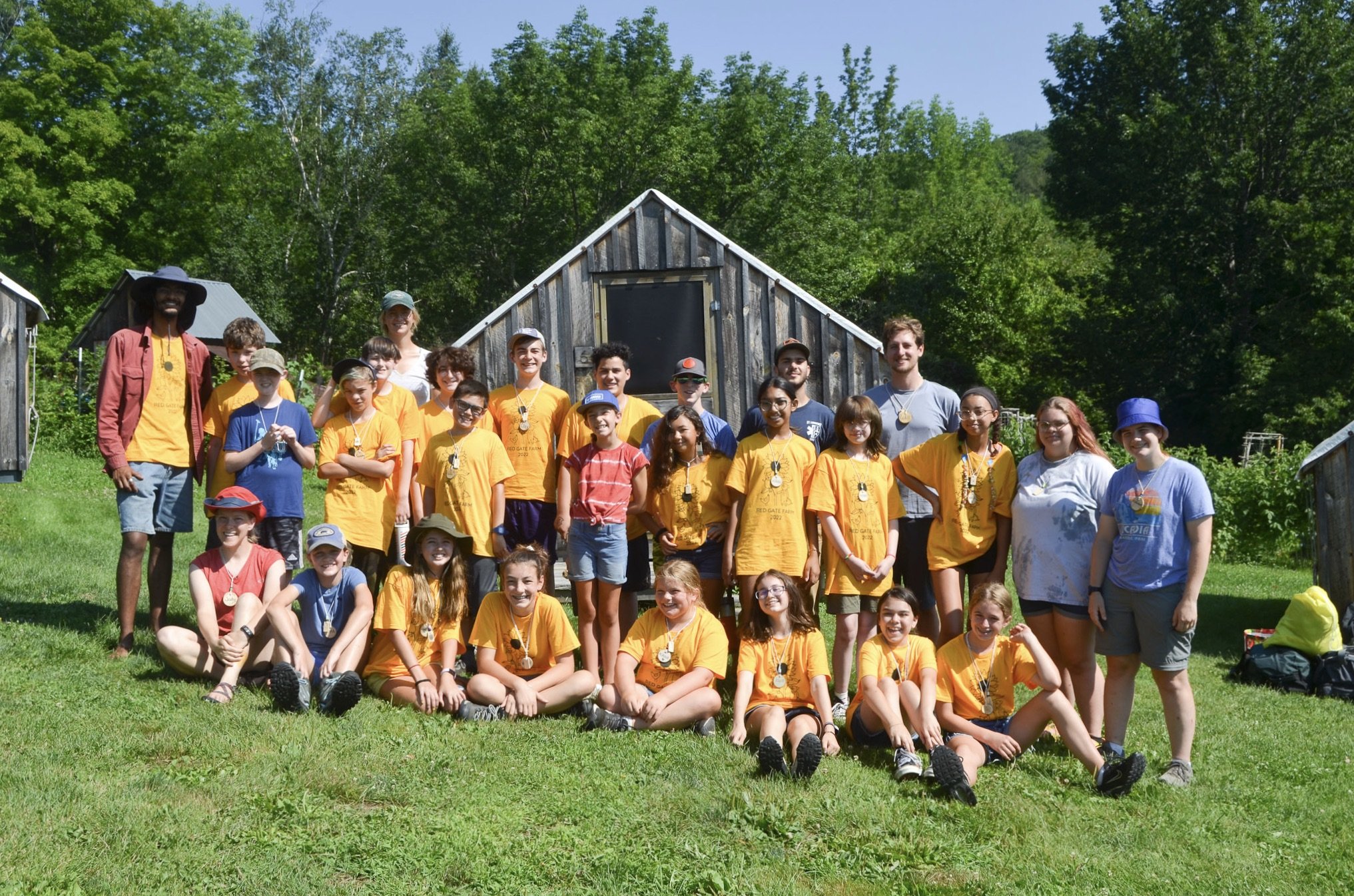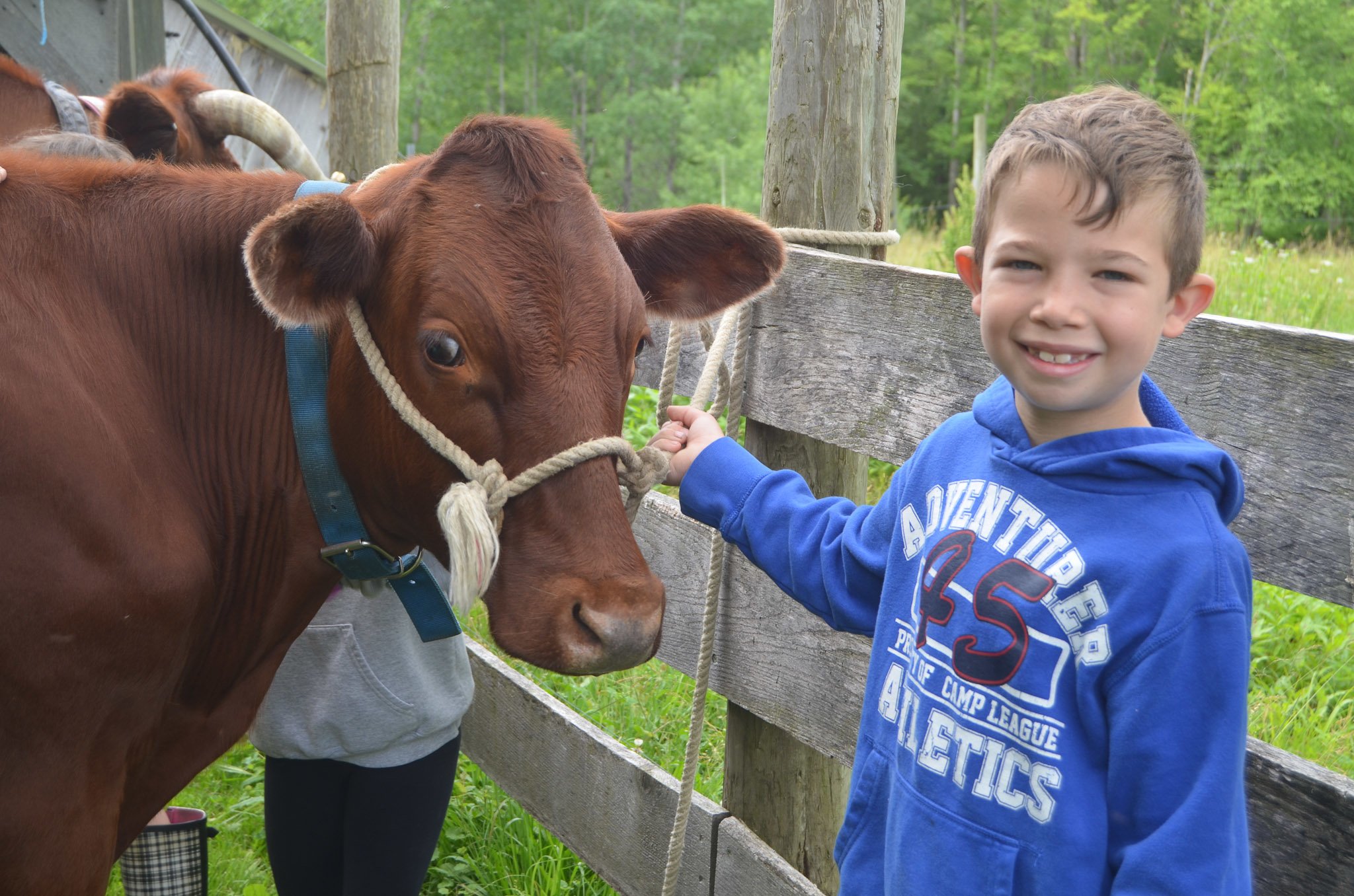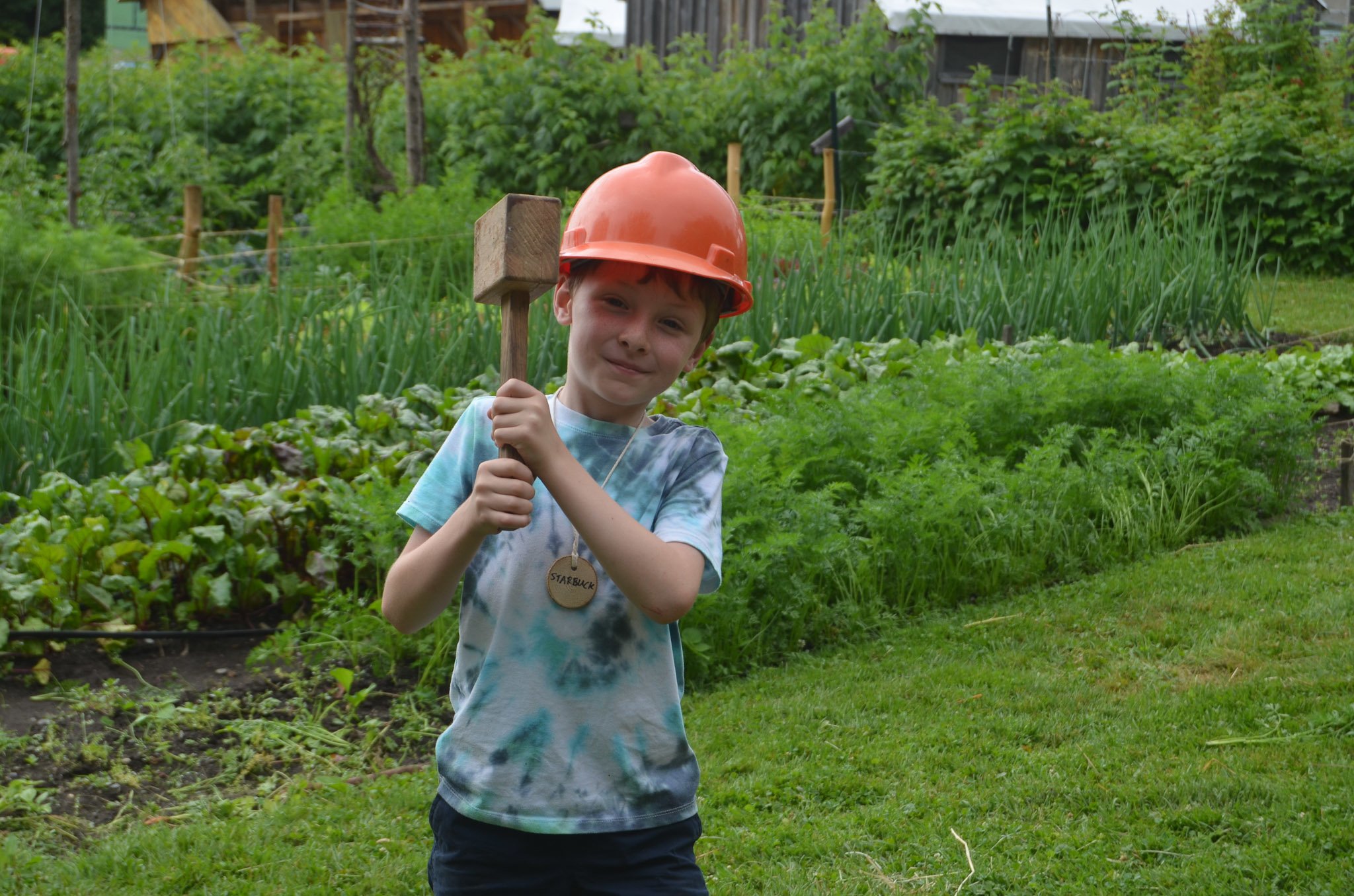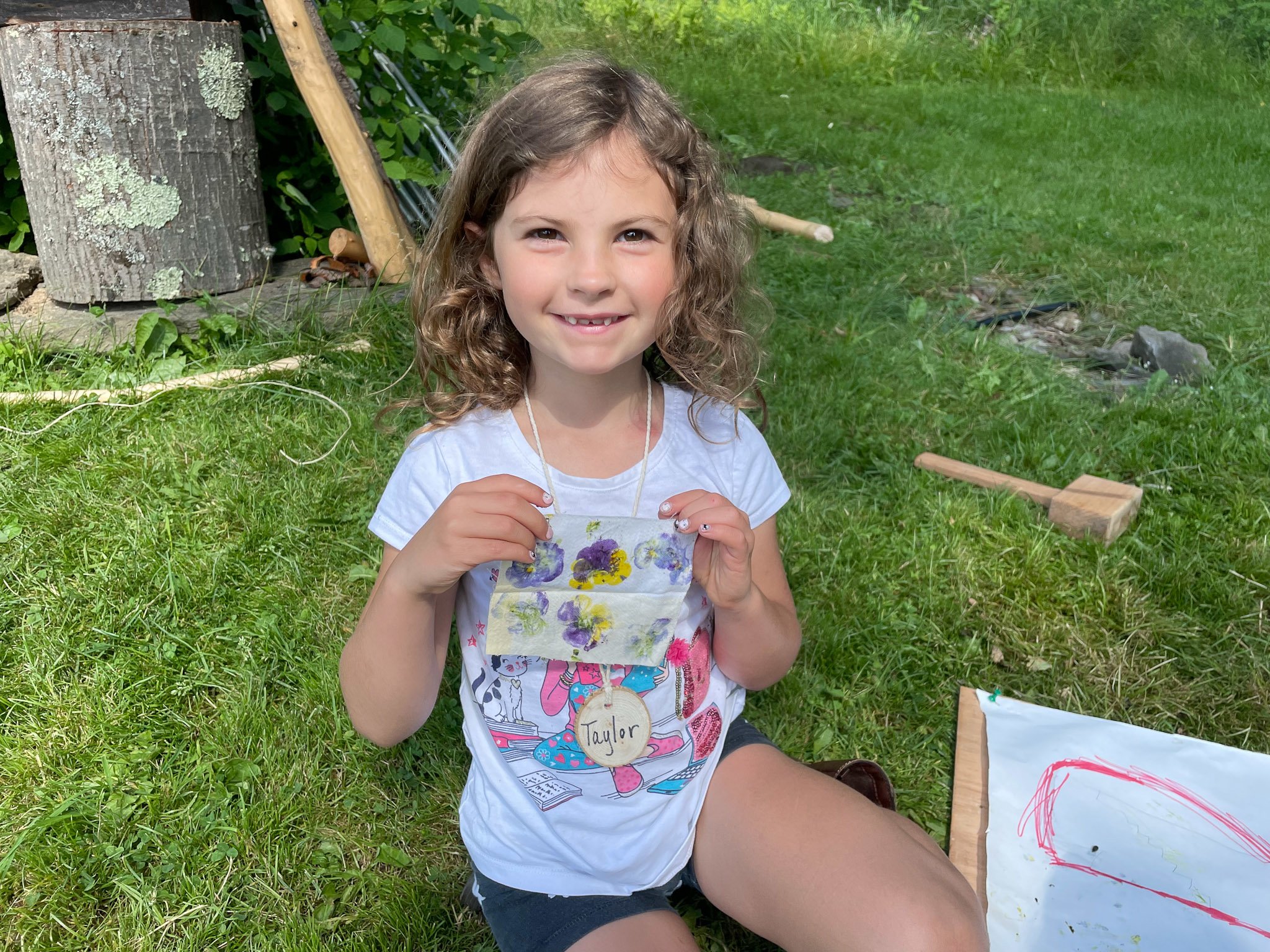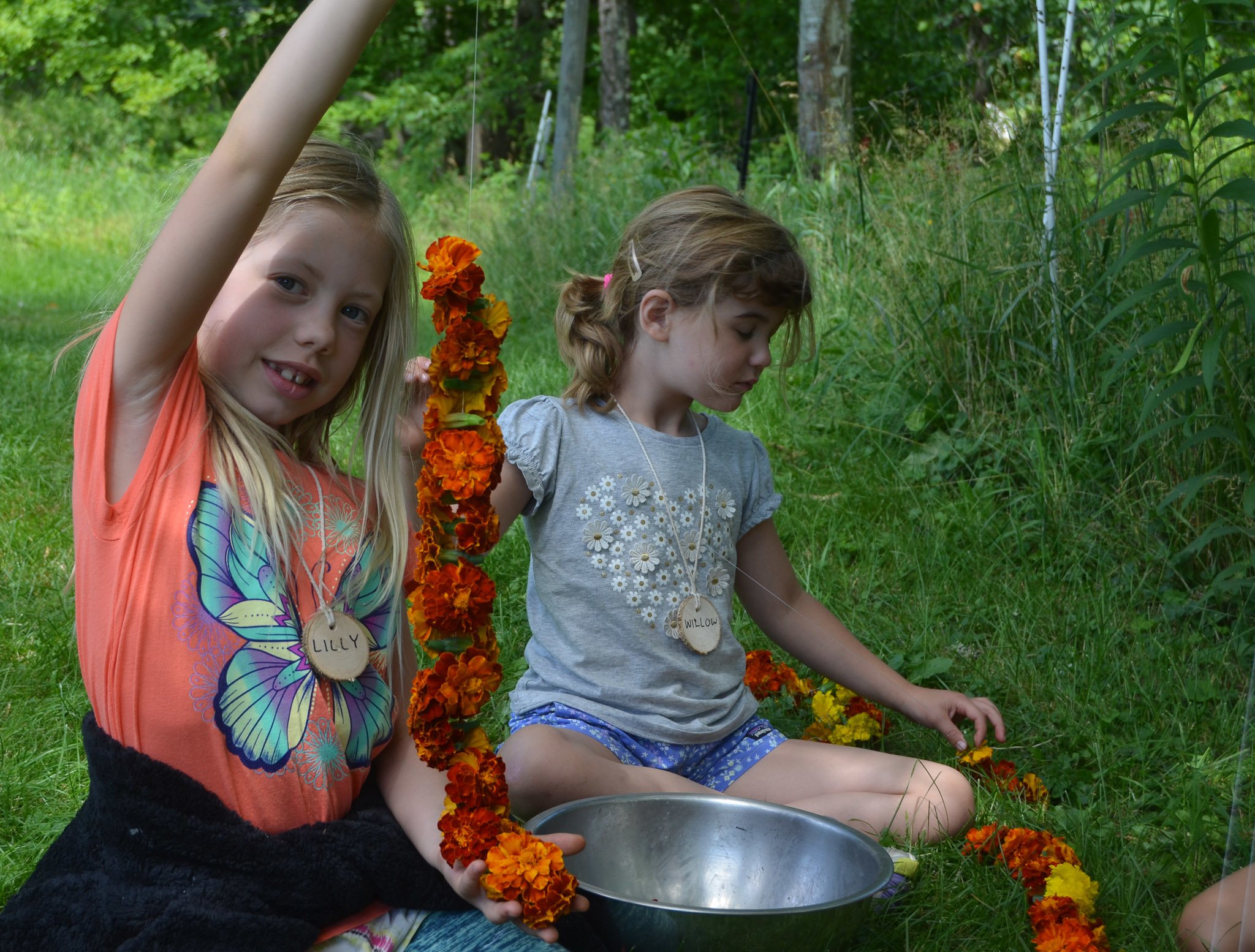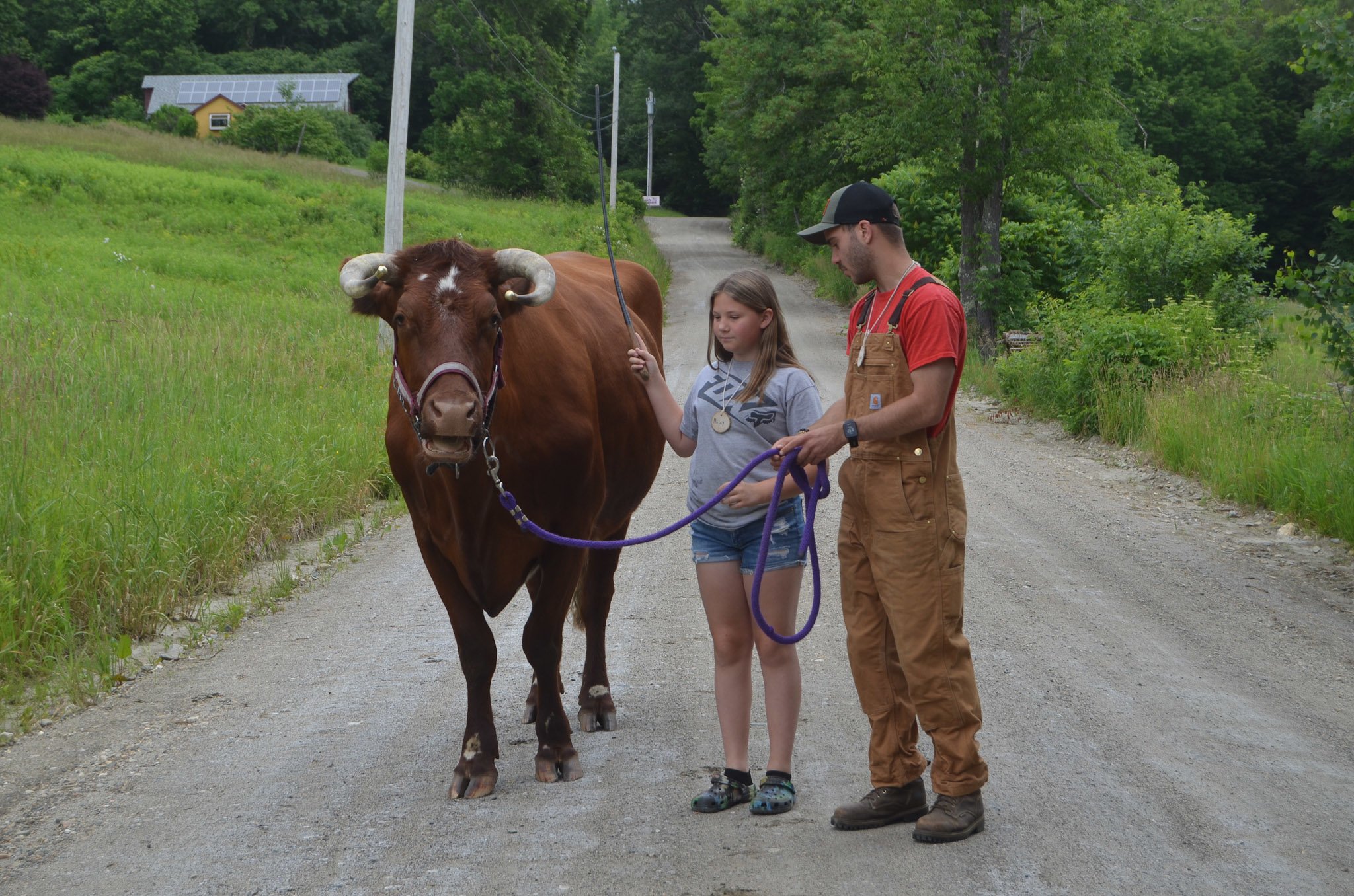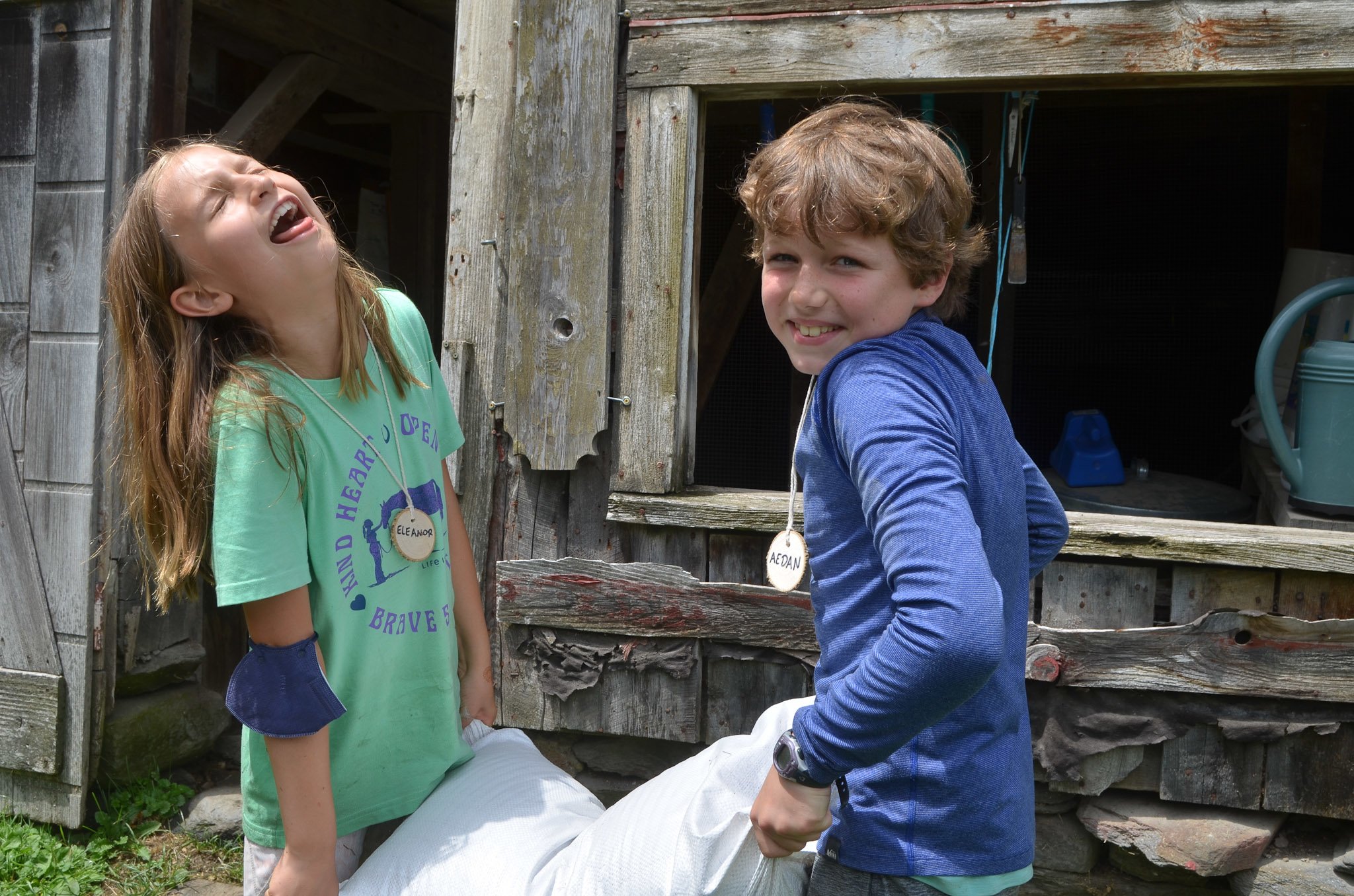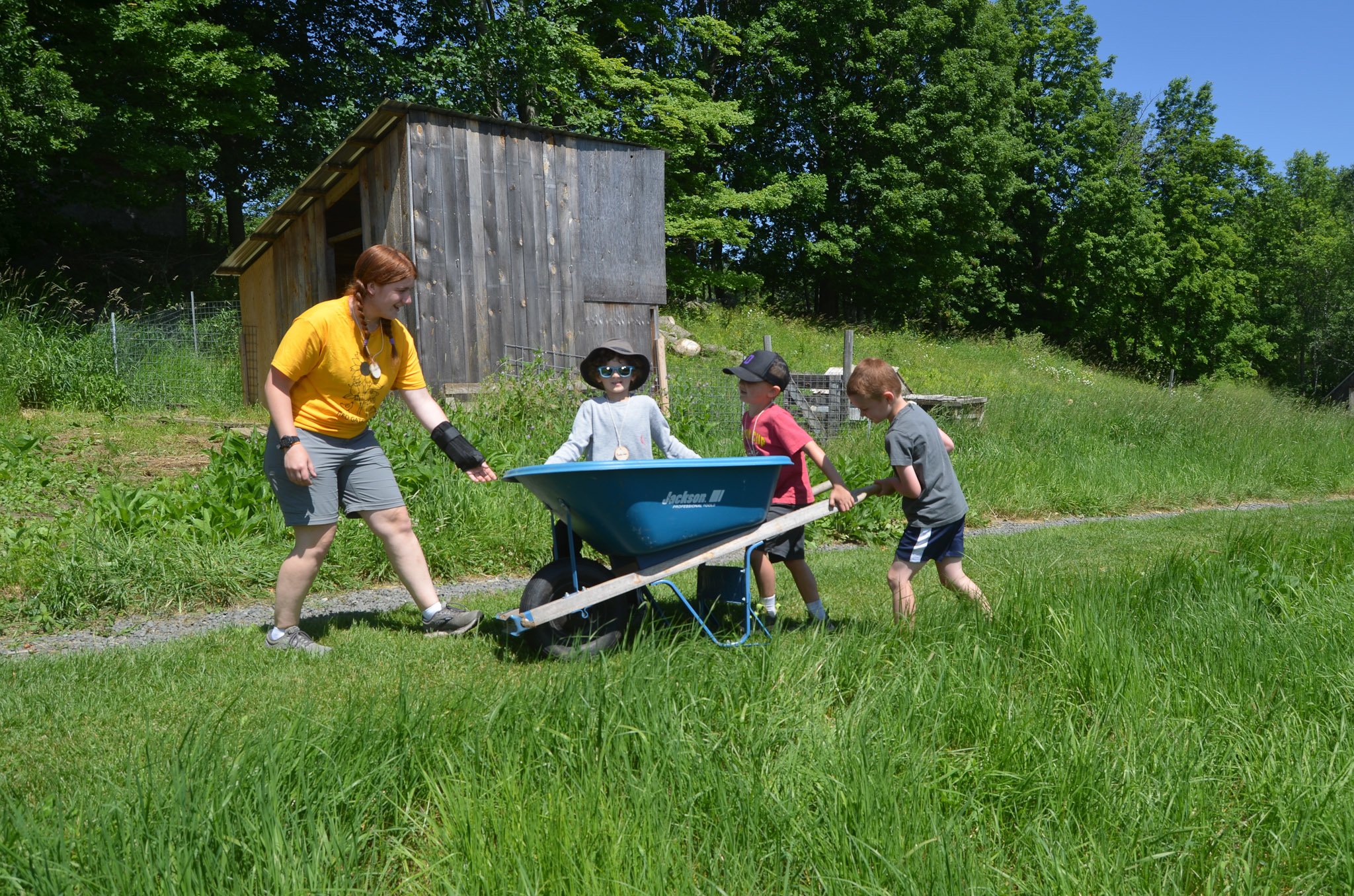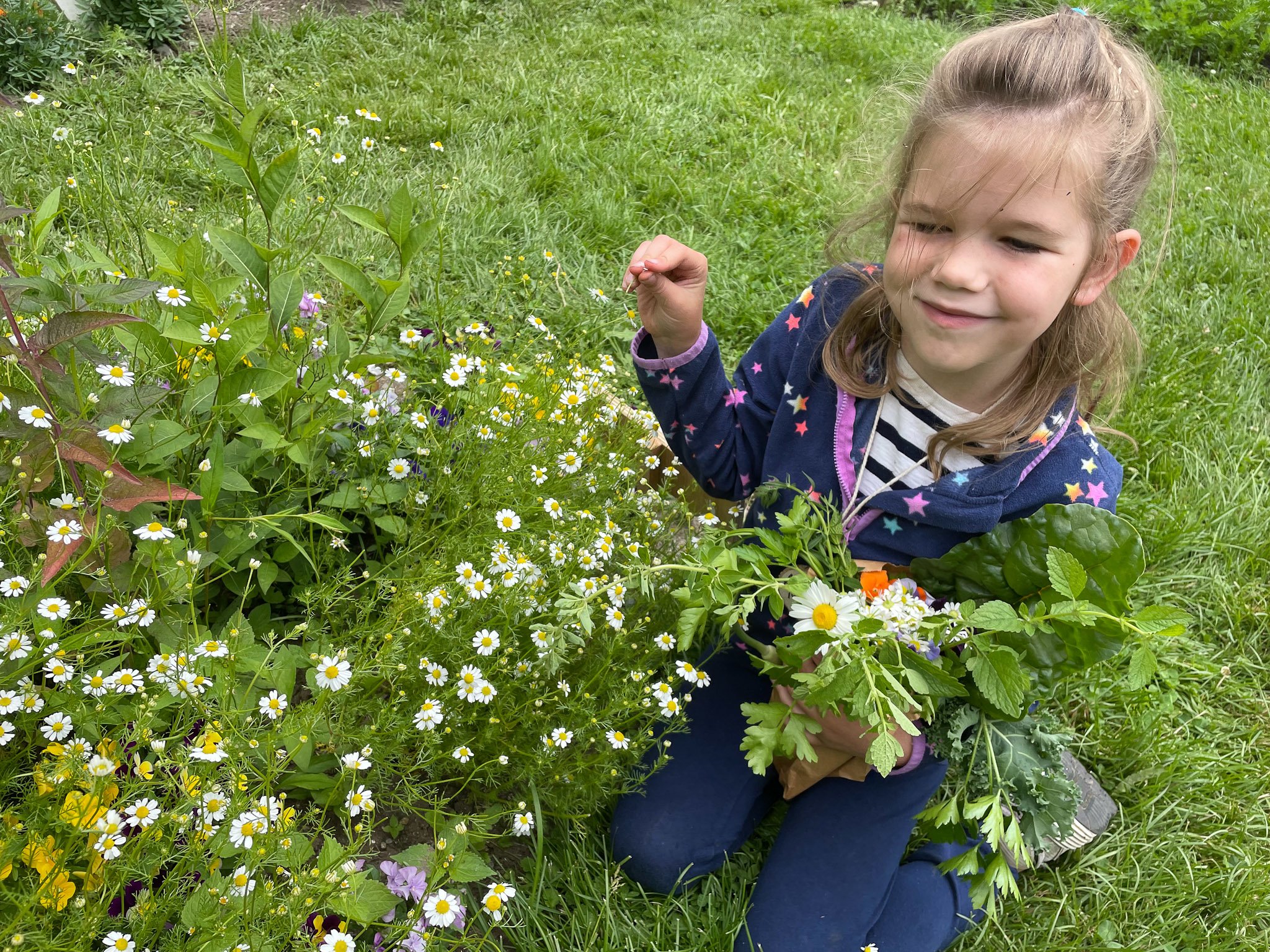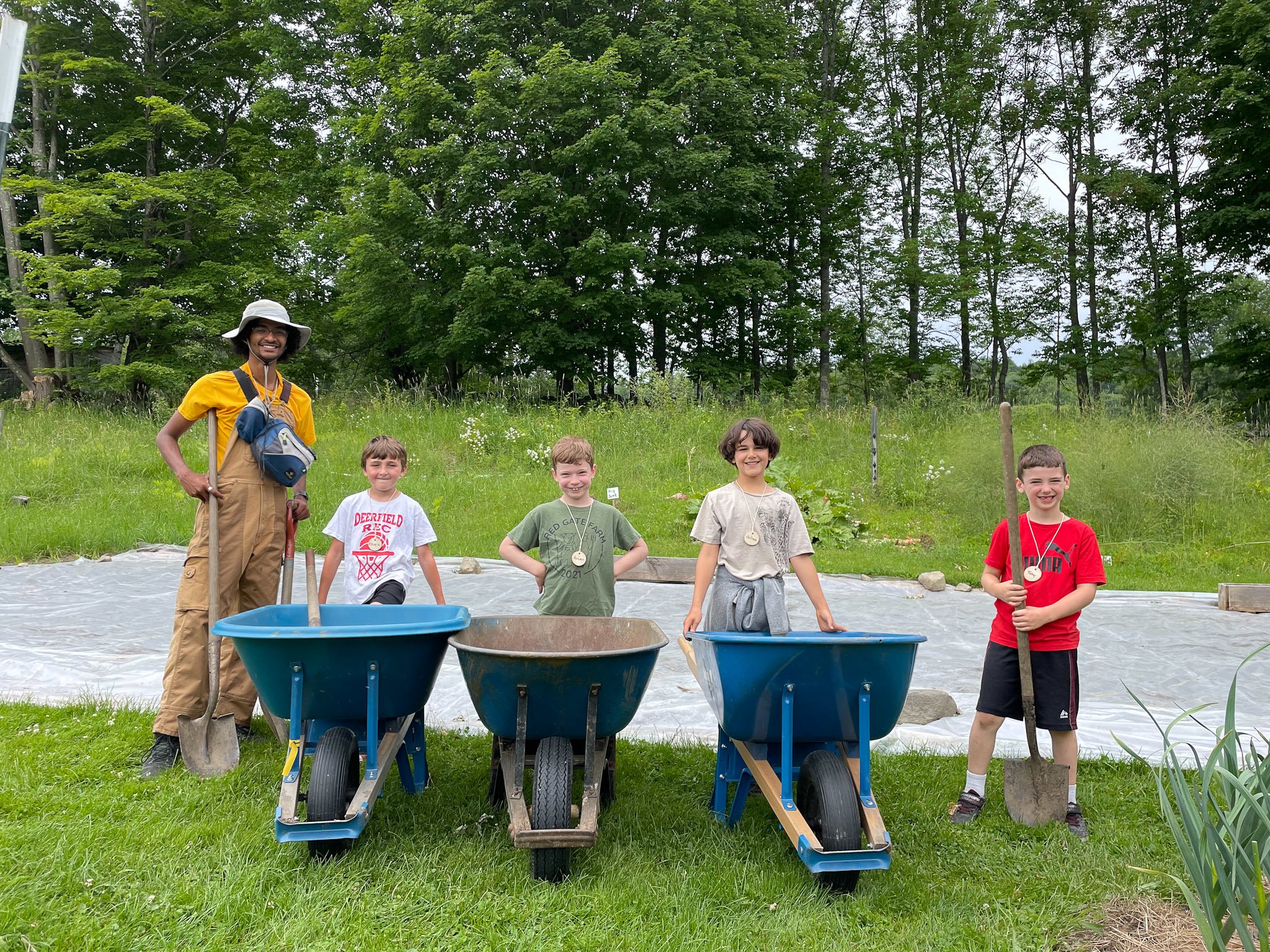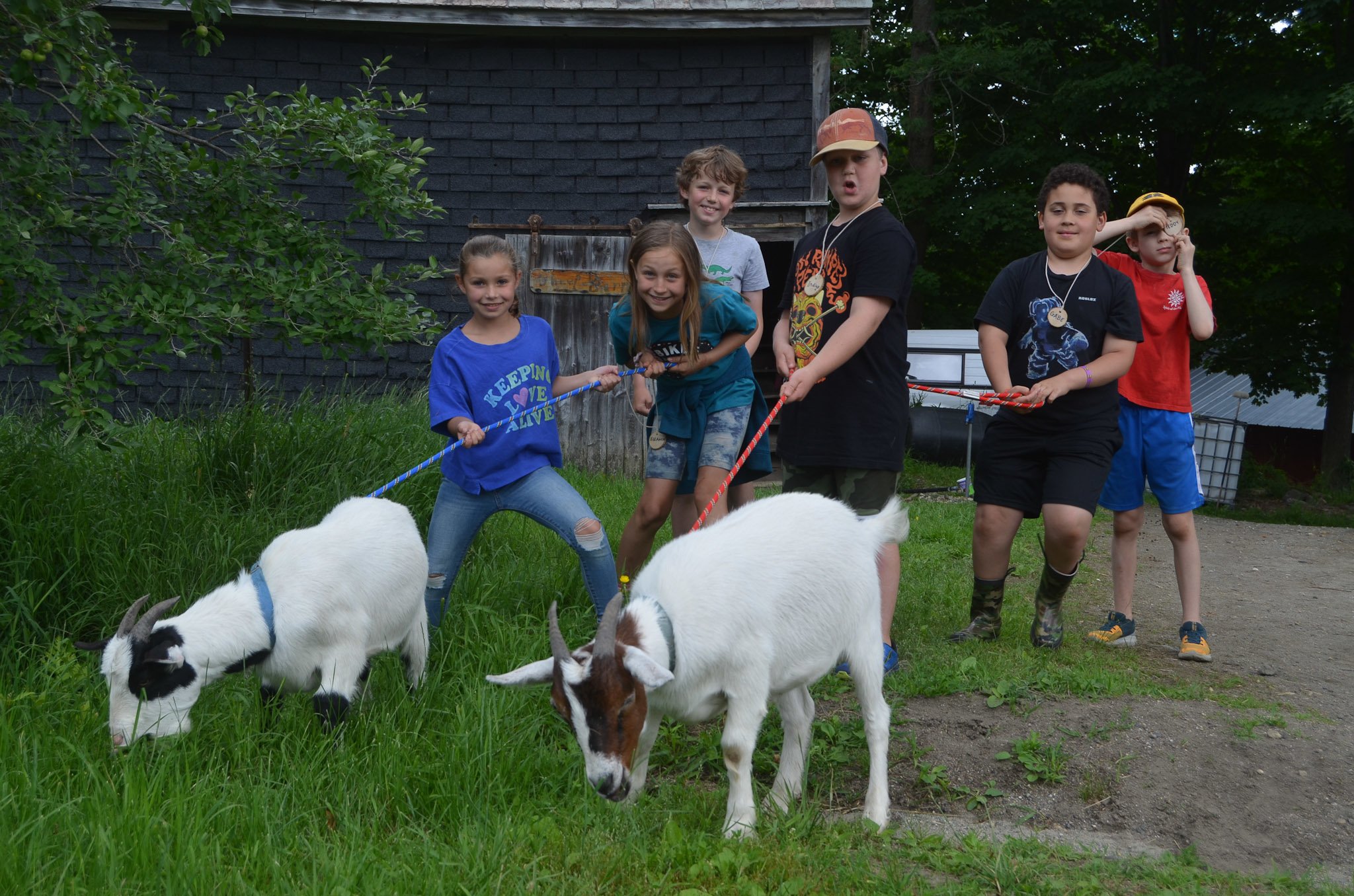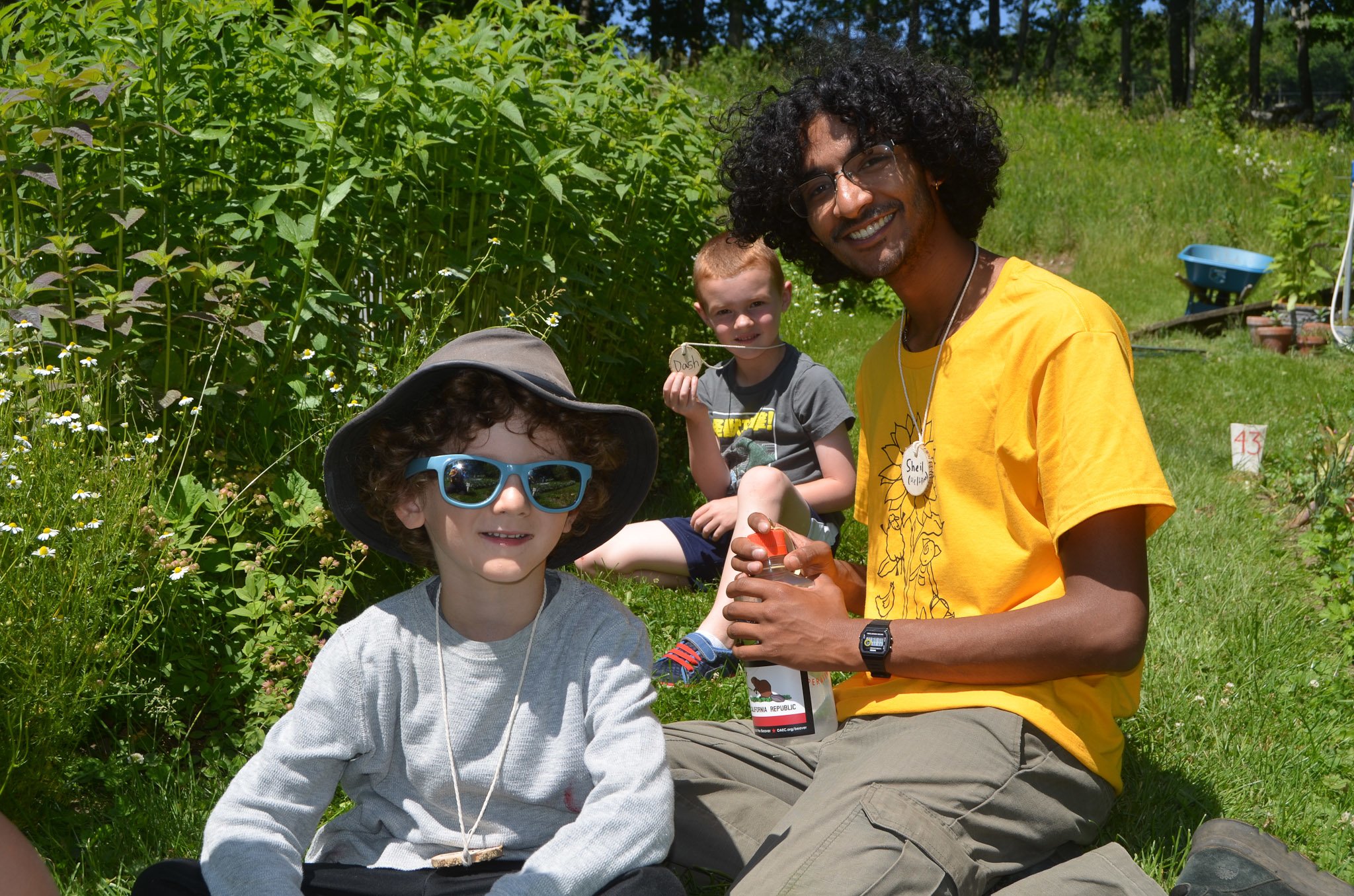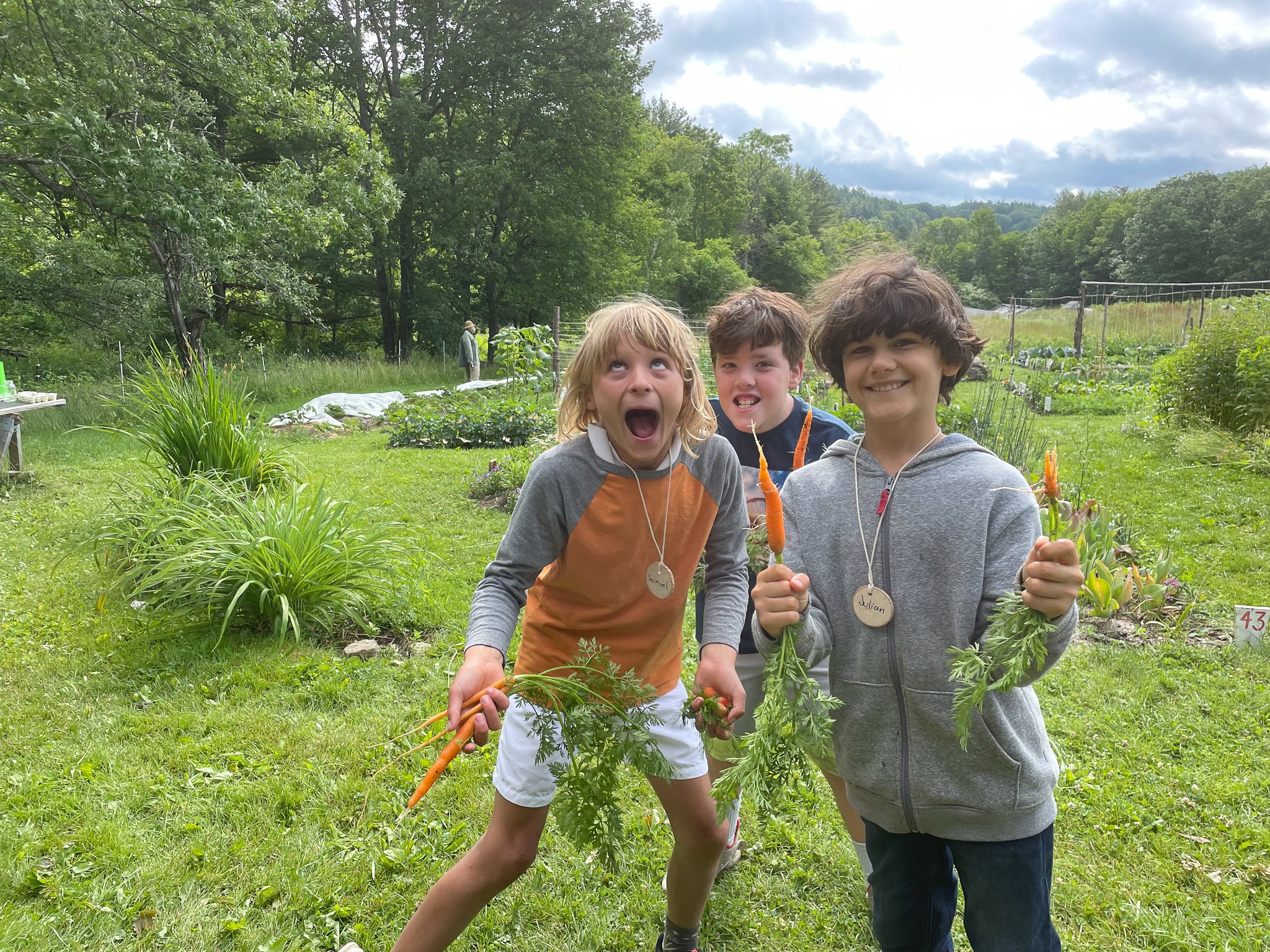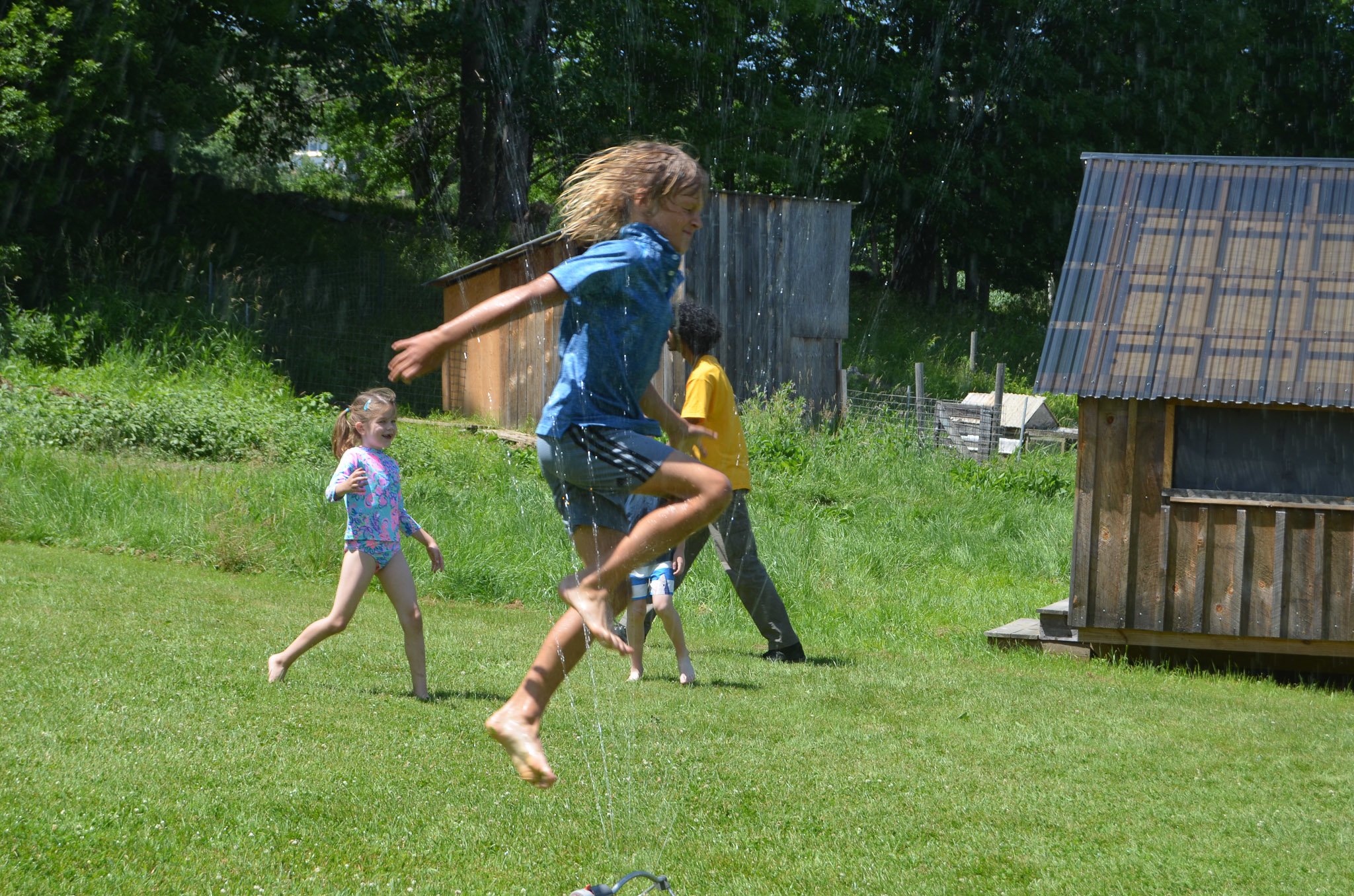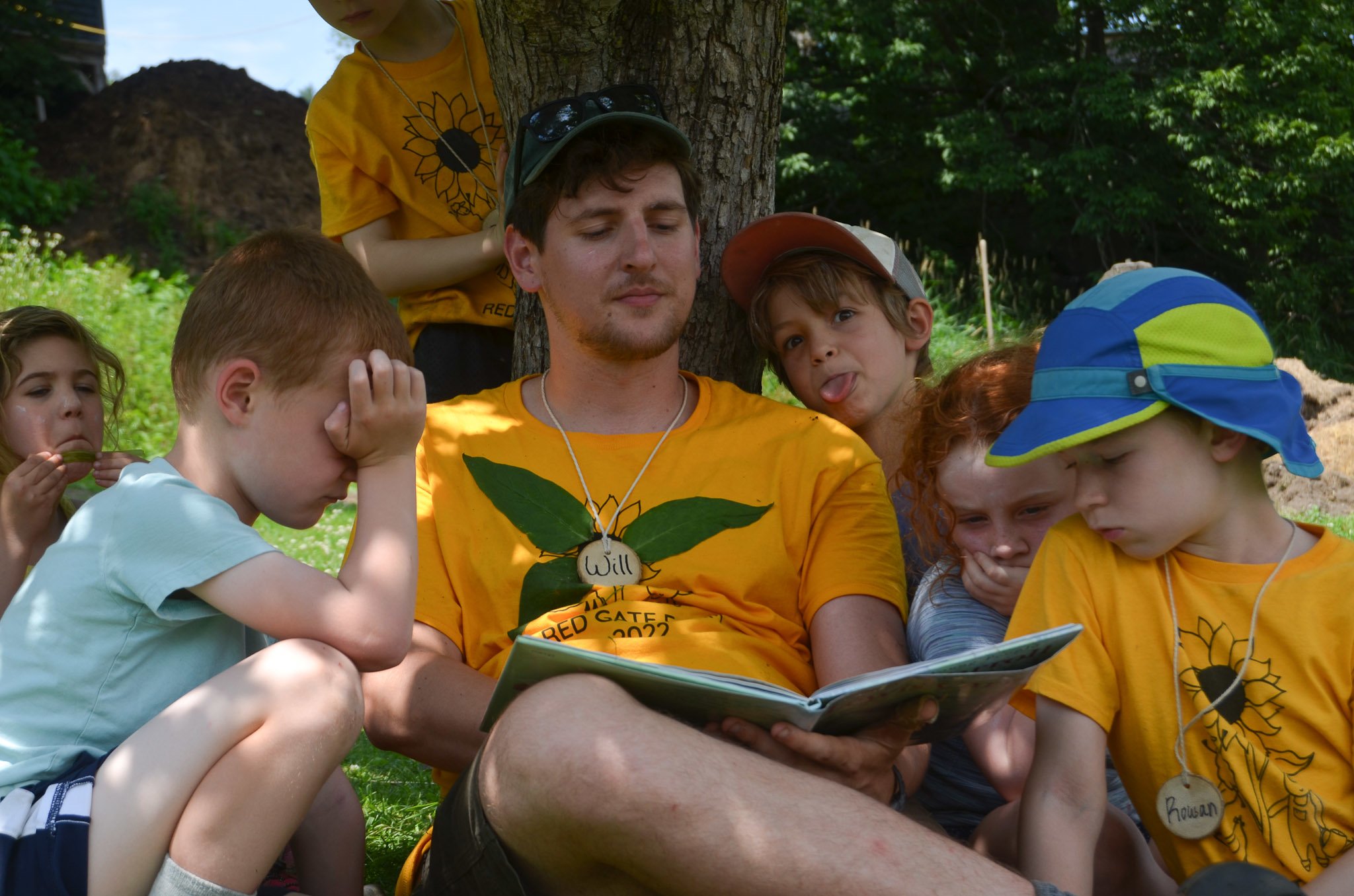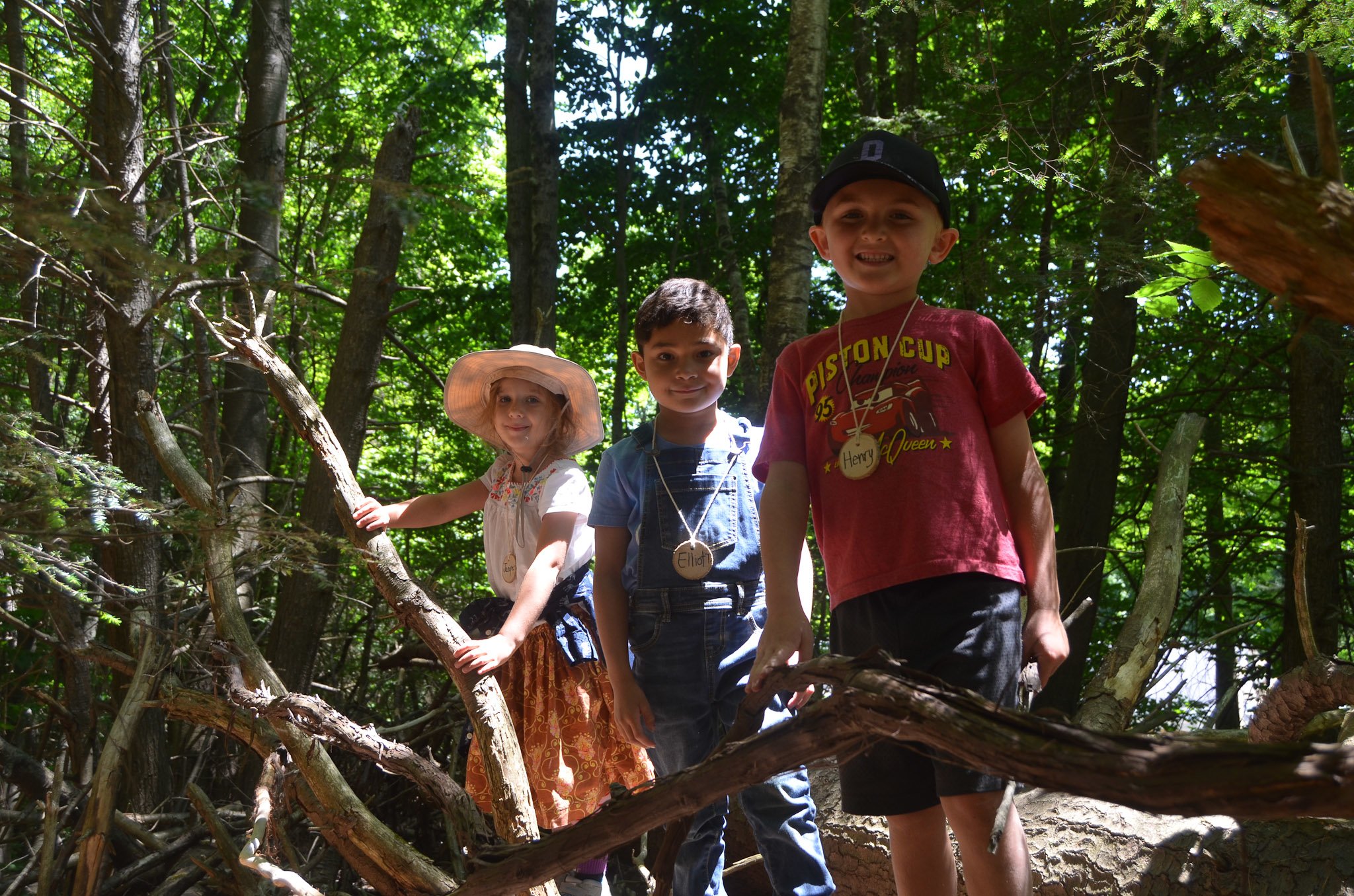We start from a place of utter joy. Just a few Fridays ago we had a very special evening here on the farm: the moon hung luminous and eerie over the landscape, a warm evening breeze tousling wigs and rippling robes. Jack-O'l-anterns flickered all over, mottling pastures and walkways with creeping shadows. Kiddoes and their families arrived in droves to enjoy an evening of games, treats, and a properly spookified farm. Adorned with all the appropriate Ms. Frizzle trappings, -an emerald green dress specked with insects of varying varieties, bee-patterned socks, magic school bus earrings, and a curly whirly up-do secured by mushroom and butterfly-patterned hair pins-I was prepared for an evening of jolly good fun. It was time for farm Halloween!
The night was as perfect as could be for our farm Halloween celebration: evening temperatures in the 60s, a moon one day from fullness, tables decorated with my hand-crafted “spooquets,” games galore and snacks abounding. Costumed kids and their families enjoyed a night chalk-full of delights-fresh cider pressed from the Clark’s local apples, hay rides, a campfire and marshmallows, donut-on-a-stick, arts and crafts and so, so much more! The night was magical, the most wonderful way to bid October a warm goodbye. And a few extra special shout-outs: to all the volunteers who came out that night, to the Clark’s for the apple press and all those delectable apples (especially after the dismal year we’ve had for fruit trees!), and to Pioneer Valley Grower’s Association for their donation of the pumpkins so central to creating our spookified farm ambiance- we truly could not have pulled it off without you. Thank you for everything, y’all. We continue to appreciate you beyond words.
A mere week after that unseasonably warm day a snow shower arrived, bespeckling the farm with crystals unanticipated and, for the most part, thoroughly enjoyed. After a week of planning, prepping, and going-going-going for farm Halloween, it is almost as if Mother Nature herself sensed we all needed a bit of a break…and a good snowball fight. Transition in good company, whether it is the changing of the seasons or the departure of those held dear, becomes the soft blanket you long for after an unexpected snow storm. Red Gate Farm is a constant reminder that we as humans are only as strong as the container that holds us, and the people we choose to surround ourselves with fortify that vessel. I am honored and proud to be enveloped by the warm blanket of the Red Gate Farm family, a group of strong, kind-hearted, passionate, endlessly caring, hilarious, authentic, extraordinary people. In this time of transition, I cannot think of a better group of humans to share space, smiles, and serendipitous snowball fights with.




